
Reptiles Bone Broth - Tubular drag conveyors - Alternative Proteins - Petflation October 2022 www.internationalpetfood.com www.perendale.com Download you online version:
IF YOU CAN THINK IT WE CAN PACK IT
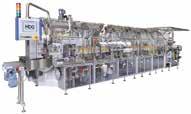


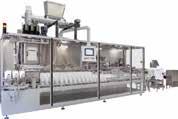













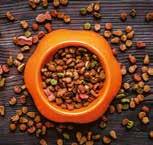




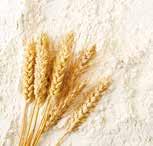






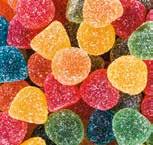
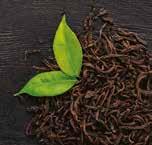
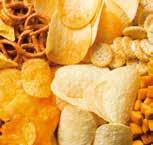
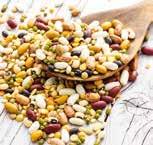





















The Packaging Group GmbH Gerberstraße 50 · 51789 Lindlar, Germany · www.the-packaging-group.com
Watch our sustainable packaging solutions at: www.the-packaging-group.com/videoportal

26 Industry Profiles
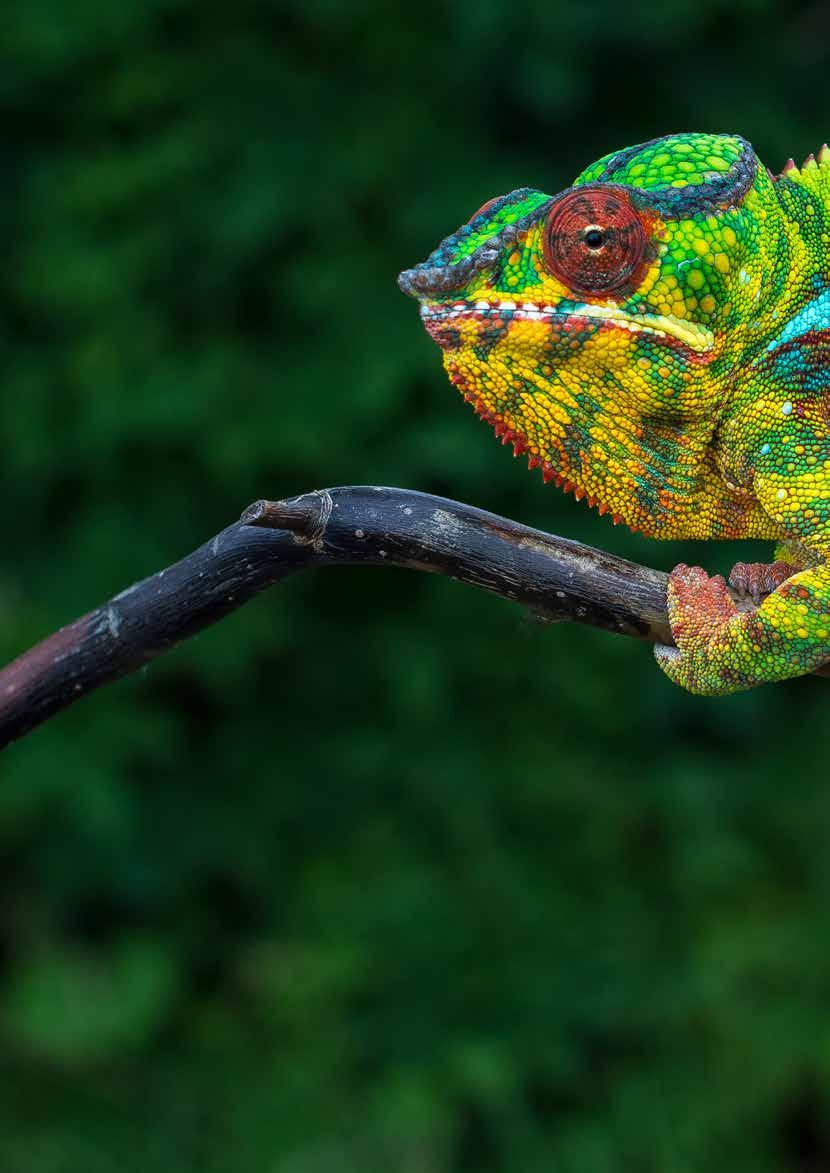
REGULAR ITEMS COLUMNS 6 Roger Gilbert 7 Joseph P Kearns October 2022 9 Industry News 28 Training 29 Troubleshooting 30 Production focus 37 Industry Events 39 The Market Place 40 The Interview 42 Industry Faces 8 Professor Simon Davies Perendale Publishers Ltd 7 St George’s Terrace St James’ Square, Cheltenham, Glos, GL50 3PT, United Kingdom Tel: +44 1242 267700 Publisher Roger Gilbert rogerg@perendale.co.uk Managing Editor Joy Nelloolichalil joyn@perendale.co.uk Technical Editor Joe Kearns joek@perendale.com Nutrition Editor Prof Simon Davies simond@perendale.com Editorial team Andrew Wilkinson andreww@perendale.co.uk Shannon Parsons shannonp@perendale.co.uk Niamh Cassidy shannonp@perendale.co.uk Community Manager Levana Hall levanah@perendale.co.uk International Marketing Team Darren Parris Tel: +44 7854 436407 darrenp@perendale.co.uk Latin America Marketing Team Clarissa Garza de Yta Tel: +52 669 120 0140 clarissag@perendale.com Turkey, Eurasia and Middle East Marketing Team Mehmet Ugur Gürkaynak Tel: +90 537 3646457 mehmetg@perendale.com Egyptian Marketing Team Mohamed Baromh Tel: +20 100 358 3839 mohamedb@perendale.com India Marketing Team Dr T.D. Babu +91 9884114721 tdbabu@aquafeed.org Asia Marketing Team Dante Feng Tel: +886 0227930286 dantef@perendale.com Nigeria Marketing Team Nathan Nwosu Tel: +234 8132 478092 nathann@perendale.com Design Manager James Taylor jamest@perendale.co.uk Design PetFood Magazine Cristina María Roldán Otero Tel: +44 1242 267700 cristinaot@perendale.co.uk Circulation & Events Manager Tuti Tan Tel: +44 1242 267706 tutit@perendale.co.uk Development Manager Antoine Tanguy antoinet@perendale.co.uk International Petfood - Volume 4 - Issue 10 ©Copyright 2022 Perendale Publishers Ltd. All rights reserved. No part of this publication may be reproduced in any form or by any means without prior permission of the copyright owner. More information can be found at www.perendale.com ISSN 2754-4680 www.internationalpetfood.com
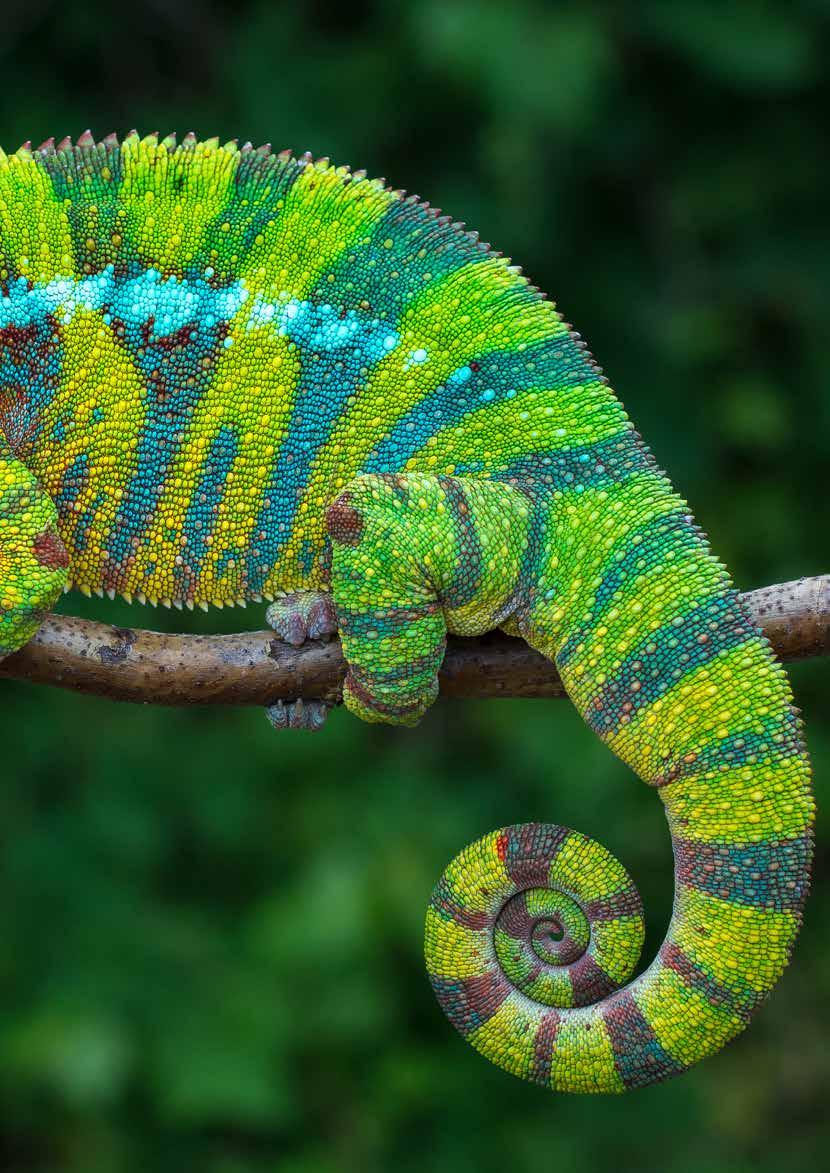
FEATURES 14 Bone Broth 16 Tubular drag conveyors 20 Alternative Proteins 22 Petflation 24 Reptiles
THE PUBLISHER
What stunning images we have for our cover and on our ‘big-picture page’ this month.
Reptiles are an underrated range of animals that we keep as pets, especially where space is at a premium and there is an appreciation for the unusual.
Lizards, snakes, turtles/tortoises (not overlooking the tuatara) make up the top four reptiles on the planet and these and many other species are being kept as pets.
Roger Gilbert Publisher – International Petfood
Organising their diets can be challenging and problematic and therefore keeping these pets healthy in captivity is fundamental to their enjoyment and their longevity.
At International Petfood we feel there is much more to the provision of foodstuffs for pets than just providing rations for the dominate populations of dogs and cats.
These other, more exotic species that are kept as pets need greater recognition among those that support pet ownership and especially around their dietary needs.
Professor Davies, in this edition, focuses on some of the key nutritional
points to be considered in meeting the dietary needs of reptiles. We also carry a feature looking into reptile nutritional and feeding habits, prepared by our staff member Niamh Cassidy (see page 24)
There is a variety of topics that cover dog and cat foods in this edition to meet those focused on the more traditional petfood production processes. And of course, there is our usual sections offering: Industry Training, Trouble Shooting and Production Focus.
In this issue we have also highlighted a combination of equipment and raw materials, this time alternative proteins (see pages 18 and 20 respectively) and the impact of inflation of the industry (see page 22) which is a considerable consideration in petfood production costs that need to be absorbed by the pet owner in the months ahead.
On a lighter note our show section is informative with reports from Space in France, Superzoo in Las Vegas and PPMA in the UK.
Finally we conclude with a great interview with Gunnar Hallmann of Andritz – this interview is well worth the read!
Our last edition
Did you miss our September 2022 edition? If so, don’t panic!
You can still read all of the great quality content that we published last month on our App – which you can download from Apple Store, Google Play or online at: https://magstand.com/petfood – with the latter platform granting you the opportunity to see all of our back editions on the screen of your desktop computer.

What you may have missed…
The diet of the pet rabbit by Andrew Wilkinson, International Petfood magazine
Considered to be grazing animals, rabbits or Oryctolagus cuniculus to give their Latin name, are herbivores. As carriers of a very complex digestive system, rabbits are very efficient food processers. In addition to this, they also have very specific dietary needs.
For that reason, getting a rabbit’s diet right is of critical importance – a genuine matter of life and death. Rabbits should be fed a daily diet that consists mostly of hay, a smaller quantity of fresh vegetables, and a limited number of pellets.
To read more, go to: https://issuu.com/international_aquafeed/docs/ipf2209_web/26
MAGLINK: https://mymag.info/e/1684
Silkworm protein: From by-product to feed innovation by Fabiola Neitzel, Prombyx, Germany
Looking into the shelves of a pet food vendor nowadays, it seems almost every brand has included an insect-based product into their portfolio. This
trend reflects the customer’s rising awareness of sustainability, animal welfare and the hunger for innovation. However, insect rearing is not a new phenomenon. Bee keeping for honey and wax and sericulture for silk production have a history of thousands of years, to only mention two examples. This article takes a closer look on the latter and its potential as a protein source for pet food.
To read more, go to: https://issuu.com/international_aquafeed/docs/ipf2209_web/24 MAGLINK: https://mymag.info/e/1685
The Interview With Dr Eric K Altom - Technical Nutritionist and Innovation Lead, Balchem Animal Nutrition and Health, USA
As a principal nutritionist and industry consultant, Eric has over twenty years’ experience in companion animal nutrition including complex formulation design, application of new nutrients in product development, and novel ingredient qualifications, Dr Eric K Altom has worked for international pet and animal nutrition companies.

Dr Altom joined Balchem in July of 2016 and is currently the technical nutritionist and innovation lead for the monogastric nutrition team in the Animal Nutrition and Health Division.
International Petfood magazine met with him recently to discuss career, as well as his views on the current state and the future of our industry.
To read more go to: https://issuu.com/international_aquafeed/docs/ipf2209_web/40 MAGLINK: https://mymag.info/e/1686
6 | October 2022 - International Petfood
Topics of the month include hammermills, unadulterated products, the extruder barrel and organic and/or functional petfoods – quite a range, so let’s get started with hammermills.
Grinding petfoods is typically done with hammermills as some plant’s pre-grind ingredients upon receipt at the plant and an example is whole corn and other grains. Usually once all ingredients are received and a mix or batch is weighed it then goes to final grinding.
Joseph P Kearns Editor, International Petfood Magazine

The final grind hammermill yields the final mix going to the extrusion cooker. The exception might be the micro ingredients which can be added before the final mixer right after this final grinding step.
What should be expected of the hammermill? The extrusion process, including the preconditioner, is where moisture and steam are added, and pressure increased so as to get the degree of expansion out of the final die.
Grinding reduces particle size which is an important part of the process. The idea is to have as even particle size as possible, no fines and no oversized particles to be exact. Ground mash is sieved and graphed to produce a tight, vertical, bell curve where most of the materials is relatively of the same particle size.
The typical grinding result chart (Table 1) shows an effective grind, most of the materials is on the three middle sieves. Low overs and relatively low fines when you consider the process. The preconditioning process as well as the extrusion process is enhanced when low flour levels or low large particles are present.
The moisture and steam added is more effectively and evenly absorbed yielding a better control on expansion and product appearance. The finer the grind the prettier the kibbles appearance, simply shift the curve to a smaller average particle size.
Hammermill grinding is a science on its own and designs vary therefore it is recommended to do test grinding of your possible formulas to visually see the results you will have in your process.
Screen sizes in terms of openings, hammer hardness, the number of hammers as well as the speed in RPM’s or the tip speed are all critical factors in grinding efficiency.
Air assistance packages moving air through the screen is also effective in hammermill operations keeping the screen clean lowering the temperature and promoting capacity through the mill.
A rather big topic
Due to regulations in salmonella levels in finished products, unadulterated petfoods has once again become a rather big topic recently. The bacteria normally seen in some raw materials will always be present. There are tests in some cases to determine their presence before processing such as tests for mycotoxins.
Foss recently developed a test for this with their equipment. Melamine was another historic topic and a test for this is also possible. The extrusion process when making petfoods can and does have the ability to eliminate many non-desirable elements.
Dr Daniel Fung in January of 2008 in the ‘Synopsis of Food Microbiology’ Seminar reported that bacteria at 77°C, yeast spores at 95°C, mould spores at 104°C and bacteria spores at 125°C are eliminated if that temperature is reached.
In petfood extrusion this is where the term critical control points developed and the technology to monitor the temperature at different locations became apparent. Exiting the conditioning cylinder at 77°C is relatively easy, controlled if a slide gate is programs to stay closed until this temperature is achieved.
At the end of the extruder barrel 125°C is also not so hard to do with a properly located probe checking temperature and by passes the product
until the temperature is reached. All of this is also greatly assisted by the existing and advancing computer controls in extrusion.
Most of the undesirable elements are critical or survive the process when starting and stopping the extrusion process, once heated up the standards are usually easily met. It should be noted that Extru-Tech Inc has a verified validation kill step with their process. It should also be noted Wenger did 770 or so tests on salmonella elimination years ago, salmonella added to the formula and tested post extrusion and not one sample was positive.
Having said this the key is not infecting the extruded product post extrusion. A totally different topic, plant design to effectively keeping the sanitised clean product from contacting any bacteria before packaging. The reason for all of this is regulations so as pet owners do not handle petfoods that contain salmonella. Separation of the plant in terms of personnel and airflow control in areas of production are a big part of new plant designs.
Growing at a rapid pace
Organic and or functional petfoods have been growing at a rapid pace. These would be petfoods made from natural organic sources, much like human foods. There are regulations of organic petfoods. In order for a petfood to be labelled as certified organic, USDA ORGANIC, it must contain at least 95 percent organic ingredients.
Petfoods sold as organic without the USDA label are considered partially organic which means the food contains some organic ingredients. There is allot of information out there on the web regarding this topic.
The USDA Organic Regulations website: https://mymag.info/e/1680 is a good start for a search on organic regulations.
An example would be use of free-range chicken meat as an ingredient source with no antibiotics used raising these chickens. Traceability of ingredients is a topic that is needed when claims are made so as to prove the ingredient source.
Providing some sort of health benefit
Functional petfoods are products that contain what are called functional ingredients. Ingredients that provide some sort of health benefit to the pet while meeting the nutritional needs of the animal.
Ingredients such as prebiotic fibres, bacteria, omega 3 fatty acids, probiotics and others such as beet pulp, fruits, vegetables, whole grains, glucosamine are examples of what to see on the label for functional foods.
These ingredients tend to assist in many pet situations such as age and mobility, but most are designed for intestinal modifications for aiding digestions or weight loss as examples.
Let’s discuss the extruder barrel in the troubleshooting section.
Particle Size Analysis
THE EDITOR
Table 1:
US Sieve Openings Microns % on Sieve 20 850 1.0 30 600 3.0 40 425 28.0 50 300 29.0 60 250 21.0 80 180 5.0 Pan 0 14.0 International Petfood - October 2022 | 7
Professor Simon Davies Nutrition Editor, International Petfood

Tipping the scales in favour of reptiles
As a niche market, the reptilian world is an important interest sector for the companion pet industry. I am aware of its importance and the keen association of many people globally with these fantastic animals.
Of course, they are not just held in homes but there is an exotic animal aspect to zoos, wildlife parks and various life science establishments that serve to educate the public and for research efforts in conservation.
These animals range from snakes, various lizards, tortoises and of course in some extreme circumstances, crocodilians including pet alligators if space is provided. Crested, Giant and Gargoyle Geckos are also very popular.
Requirements for feeding differ enormously and we tend to consider these animals as ‘cold blooded’. This is not technically true as the proper definition is that they are grouped as ectotherms and lose heat from metabolism to their environment. As such they require higher temperatures for routine metabolism and for growth, locomotion, and reproduction.
The bioenergetics of reptilians are quite different in many ways to mammals and includes different levels of efficiency and caloric conservation strategies. Reptilians also exhibit a fundamentally different mode of nitrogen excretion compared to mammals. Like their avian cousins, they excrete waste nitrogen as uric acid instead of urea and are therefore classed as uricotelic creatures. This makes them energetically more efficient in processing excess amino acids surplus to requirements.
Snakes and lizards absorb heat to raise whole body metabolism to remain active and we all know that in the wild bask in the sun during summer months. This is reflected in their food intake and need to provide elevated nutrition at the higher plane of activity.
Of course, as mainly carnivores they have essential requirements for high protein intake and the complete spectrum of amino acids. Also, they need the essential lipids to maintain cell membrane integrity and functional immune characteristics typical of all animals. There will be specific variations dependent on external factors such as temperature, season, and food availability.
However, pet owners, offer much more homogeneity in the containment system due to constant control of the optimum temperature and the lighting conditions in tanks and cages.
Snakes and lizards are fed with many different types of food, and these range from humanely freshly killed such as rodents or day-old chicks (frozen) for larger snakes like boas and pythons.
Frozen chicks taste very different to mice and other frozen mammals and are often used for fussy feeders, to get them into a
habit of eating again after illness or gestation.
The use of crickets, locusts and meal worms, wax worms and fruit flies are a frequent meal for corn snakes and garter snake enthusiasts as well as iguanas and other lizards that are very common.

The production of insects as a source of food for animals is an expanding area and many specialist companies are engaged with the production of exotic insects for the zoo and private keeper or hobbyist. The days of keeping terrapins in a tank have evolved considerably into a multimillion-dollar industry for these other exotic reptiles.
Indeed, my hometown of Llanelli in Wales UK boasts a keen young man Cameron Reardon who has formed his own company called the Bug Box skilled in producing a variety of insects for the feeding of reptiles amongst other applications.
Providing balanced nutrition
Reptiles can easily suffer from nutrient deficiencies unless care is taken to provide balanced nutrition and meet their basic requirements for vitamins and minerals.
For example, it has been reported that snakes can experience an acute thiamine (Vitamin B1) deficiency that can lead to serious neurological issues causing erratic movements and twisting events. This has been due to using freshly defrosted fish with active thiaminase elevation degrading the natural thiamine levels.
This can be rectified by using supplements and suitable additives to the diet. The pet food industry has developed the need for dietary support of exotic animals such as reptiles with a plethora of commercial diets and products with added value.
Such diets are often dry or flaked, pelleted compound formulations and even some forming gels when mixed with water and allowed to set. These contain supporting proteins and oils together with vitamin and mineral premixes as well as pigments like carotenoids, and even prebiotics and probiotics for promoting reptilian health and welfare.
There are also nutrient and electrolyte fortified drinks for snakes and lizards to complement the dry food products. Reptiles kept under warm dry conditions can quickly lose body fluids and electrolytes like sodium and potassium and trace elements must be replenished.
There is much research work focused on many reptile species and clearly there is scope for much more science. It is an active and dynamic area in the animal nutritional sciences field.
8 | October 2022 - International Petfood
Primal Pet Foods
range of pet treats
sustainably raised proteins, sourced from farms where the health and wellbeing of animals are prioritised, Primal Petfoods has launched 15 new pet treats for cats and dogs as part of their
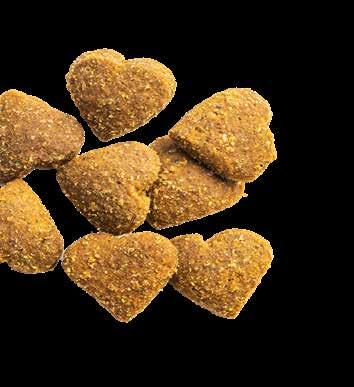
Many of the treats contain certified-organic produce and considerately sourced real food inclusions such as nutrientrich goat milk. All treats are free from corn, wheat, soy, grains, glutens and artificial preservatives, flavours and additives.
The range features freeze-dried treats, chewy jerky bites and puffy lung cubes to meet the varying needs of dogs and cats. The freeze-dried treats are made with ethically sourced proteins and real food inclusions such as goat milk and probiotics to support digestion and immunity. The freezedried treats also come in a liver recipe, providing pets with a high protein snack with palatable liver and a crunchy texture.
The range also includes dehydrated treats, which are single ingredient treats gently dehydrated to provide a puffy, ‘irresistible’ snack.
All of the company’s petfood products are produced in temperature-controlled, certified USDA and State Department of Agriculture food manufacturing facilities.
PawCo ships first batch of plant-based meat dog food Plant-based

petfood producer PawCo Foods announces the launch of their proprietary plant-based petfood and shipped their first batch of orders, as of August 3, 2022.
The company, which is aiming to “remove animals from the petfood chain” was founded by a former ImpossibleFoods employee, Dr Mahsa Vazin and according to PawCo, they have invented the world’s first fully plant-based meat specially designed for petfoods.
“As a scientist, I couldn’t stand seeing Paco, my beloved dog, eating unhealthy food every day,” explains Dr Vazin, founder and CEO of PawCo. “That’s why I founded PawCo Foods – to change how our pets eat on a daily basis and make the world a greener place. I’m now dedicated to helping all of our furry friends out there to live a happy, healthy and joyful life.”
The company says its plant-based meat is just as tasty as traditional meat while providing all the essential amino acids, vitamins and minerals which are necessary for dogs. Their first plantbased recipe was publicly launched as of August 3, 2022 and they are accepting orders for new customers.
Neogen Corporation announces US$70 million food safety facility expansion
Inanticipation of the approval of the expansion of their Lansing food safety facility, Neogen Corporation recently held a groundbreaking ceremony. The expansion cost the company US$70 million and is expected to take 12-14 months to finish.
Those attending the ground breaking ceremony included President and CEO John Ardent joined by City of Lansing Mayor Andy Schor, alongside Neogen executives and Board of Directors members.
“Neogen is proud to call Lansing our corporate headquarters and we are so happy to continue growing with the city that helped build us into the global company we are today,” says Mr Ardent. “This expansion, along with the merging of 3M’s Food Safety business with our existing operations, will lead Neogen into a new era of growth.” Noegen develops solutions
related to food and animal safety which includes culture media and diagnostic test kits to detect foodborne bacteria, natural toxins, plant diseases and other hazards to food safety. It also manufactures a range of animal healthcare products which
“Neogen’s US$70 million investment in Lansing will further Michigan’s leadership in the life sciences and agribusiness secotrs,” comments
Governor Gretchen Whitmer. “This new manufacturing facility will expand Neogen’s footprint in Lansing and create up to 100 new good-paying jobs
It will also create around 60-100 new jobs which will raising Neogen’s Lansing staff from 650 employees to 750 at a maximum. Positions, which will be hired throughout the project, will range from automation technicians and operators to process engineers, chemists, quality engineers, quality technicians and managers and
The project is expected to begin in September this year, with completion expected to happen in December 2023.
PETFOOD NEWS International Petfood - October 2022 | 9
EU Green Deal animal fats in biofuel proposal threatens petfood supplies
Newproposals to use animal fats as a biofuel could negatively impact pet food supplies. The European Parliament has proposed using Category 3 animal fats as biofuel for the aviation and maritime industries, in an effort to ‘decarbonise’ transport with the EU green deal.
The goal of the European Union’s Green Deal is to become the first climate neutral continent by 2050, creating a sustainable economic model, affordable energy, a cleaner environment and smart transport.

The original initiative, called the ‘ReFuelEU Aviation Initiative’, proposed in 2021 that Sustainable Aviation Fuel (SAF) was restricted to Category 1 and 2 animal fats (both of which cannot be used for pet food or animal feed due to its high risk). There are now plans underway to change these EU rules on biofuel, to include category 3 animal fats.
Category 3 animal fats are edible by-products not intended for human consumption. These by-products contain essential fatty acids and energy to help pet’s function suitably, they are sustainable and difficult to replace.
The proposal is a bid to create sustainable transport, however there are worries that the legislation could lead to a serious shortage of essential ingredients needed for safe and nutritious pet food, as these raw products are already in short supply.
Should a shortage occur, this move could increase the carbon footprint of pet food manufacturers due to the lack of better options. It could also consequently increase pet food prices during a cost-of-living crisis.
The document also goes on to urge policymakers to rethink this proposed change, as it may increase the risk of shortages that make it very difficult to feed pets adequately.
Gourmate becomes New Zealand’s first B Corp certified petfood brand, a certification which recognises the company’s social and environmental impact, accountability and transparency.
The process required the company to investigate and prove all of their
processes – from sourcing of the Green Lipped Mussels they use in their recipes to how much contractors are paid – were above board.
Although New Zealand’s first B Corp certified petfood brand, they join the ranks of other New Zealand B Corps which include Ethique, a plastics-free beauty company, Allbirds, sustainable shoewear makers and international pet business West Paw.
For the co-founders Laura and Steph, the certification recognises their commitment to the welfare of people, the planet and pets. Since the company’s launch in 2020, the focus has been on producing dog treats from locally and fairly sourced ingredients meeting a human food grade standard.
Gourmate also donates a portion of their annual profit to local animal
welfare charities through their initiative Gourmate Giving, which in 2020 supported local charity New Zealand Chihuahua Rescue, and are ‘advocates’ for better standards within New Zealand’s pet sector.
To gain a B Corp certification, businesses must score a minimum of 80 points out of 200 across a range of categories that identify high social and environmental performance. Median scores for companies that complete the assessment is 51, where Gourmate scored 88.9.
Commenting on achieving the certification, the company said that they were not ‘perfect,’ and that the B Corp framework provides ‘guidance’ on where they can improve, striving to provide better treat options for pet owners.
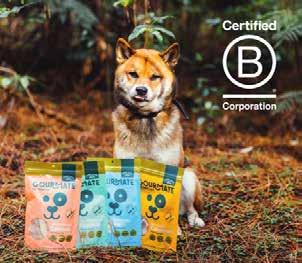 NZ petfood company is first of its kind to receive B Corp certification
NZ petfood company is first of its kind to receive B Corp certification
PETFOOD NEWS 10 | October 2022 - International Petfood
silo tightness. Double Vertical Joint.


Tightness is improved. Double
Butyl
are
with
on both
symaga.com • +34 91 726 43 04 • symaga@symaga.com 50 million m3 built Projects in 145 countries Top Project worldwide Flexibility and adaptability A reliable team for a reliable project YOUR RELIABLE PARTNER Improve
·
sealing
sides of the screws. ·
rolls
supplied
double strip to improve assembly times. GRAIN TECH INDIA, Bangalore, 26-28 August, Stand K-9 VICTAM, Bangkok, Thailand 7 - 9 September, Stand 1670 VISIT US
New trading scheme aims to increase petfood imports to the UK
TheUnited Kingdom has launched a ‘Developing Countries Trading Scheme’ (DCTS) trading plan, to increase access to product imports from developing countries for UK businesses, which includes expanding animal feed and pet food ingredients imports.
The scheme was launched to help developing countries grow and prosper, with tariff cuts extended to products imported from 65 developing countries (spread across Africa, Asia, Oceania, and the Americas), therefore building the UK’s commitment to mutually beneficial relationships with emerging economies. The plan will benefit British businesses and consumers with lower prices and more variety.
This scheme aims to promote a more active global trading system,
whilst reducing import costs, supporting economically vulnerable countries worldwide, and helping the cost of living. It demonstrates the UK’s push to drive free trade, a progrowth agenda worldwide, and seeks to eradicate poverty.
Since the UK separated from the European Union in 2020, the UK has been using the Generalised Scheme of Preferences (GSP) which will be replaced by the DCTS. With the UK’s updated status as an independent trading nation, the DCTS will allegedly go beyond the EU’s GSP, as it offers cuts to more products including foods not widely produced in the UK like animal feed and pet food ingredients.
Retailing pet food will no longer be included in the standard preferences tariff, (valued at 0% in the enhanced preferences tariff and the comprehensive preferences
tariff), and seasonal tariffs will be removed. Simpler trading rules and requirements will be put in place, such as the rules of origin being made easier for businesses to export their products.
In 2021, the UK imported 1.02 million tonnes of pet food under HS Code 2309 with product-specific rules and requirements (more than half being for retail pet food), however, now the DCTS will allow for tariff address changes with no processing requirements.

Pet ownership is on the rise, with the European Pet food industry federation (FEDIAF) reporting that in 2021, 33 percent of UK households own at least one dog, and 27 percent of households own at least one cat. The DCTS could offer significant opportunities for pet nutrition processors in developing countries.
Harringtons launches new range of diet supplements for dogs
UKbased pet brand Harringtons has launched new advanced diet supplements for dogs, adding to its Advanced Science Range. The supplement launch includes quality, nutritionally advanced supplements, which are affordable and accessible.
Owned by Inspired Pet Nutrition, Harringtons’ launch is timely, as the dog supplements market is worth approximately UK£120 million/ US$132.8 million a year and growing, at a rate of over 50 percent across retail and online channels. Having identified three key
naturalness and meatiness, Harringtons is launching four new products made from natural ingredients and freshly prepared meat and fish. Dogs fed the supplements will be given a tasty, meaty product.
The four new products come in the form of chews and tablets, to address issues facing dog owners who are forced to hide or disguise supplements to give them to their dogs. They are currently available in two age ranges with two product formats. The supplements target joint support in adult dogs, and senior hip
Ingredients include Green Lipped Mussel which works as a concentrated source of Omega-3 and benefits a dog’s skin and coat, whilst improving mobility by supporting stiff and aching joints.
There is also a blend of vitamins C and E to neutralise free radicals, maintaining joint mobility. Added magnese and glucosamine help with collagen
formation in the cartilage, tendons and ligaments, with a boost of hyaluronic acid which supports synovial fluid in lubricating and cushioning the joints.
Endorsed by The Yorkshire Vet, the supplements are designed to be fed alongside a healthy diet.
“Our dogs deserve a life filled with joy and comfort, where they can walk, run, jump and play to their hearts’ content,” says Peter Wright. “I’ve partnered with Harringtons on its Advanced Science Diet supplements to make sure we help provide our dogs with just that.”
“When your pet gets older or suffers from health issues and starts to slow down, it can be a difficult time for the whole family,” explains Chris Wagg, Marketing Director at Inspired Pet Nutrition.
“With this new launch we are hoping that alongside a healthy diet and active lifestyle, owners will be able to share those special moments with their pets for longer.”
Also in the Advanced Science Range is Harringtons’ diet dog food, which is formulated with freshly prepared chicken and designed to support immunity, digestion and stool quality in dogs.
PETFOOD NEWS 12 | October 2022 - International Petfood
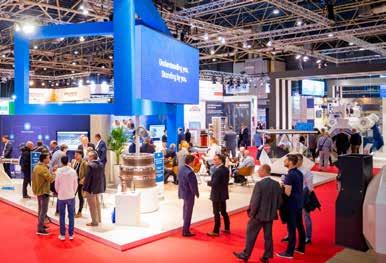







3-5 OCTOBER 2023 NEW! SÃO PAULO BRAZIL LATIN AMERICA’S LARGEST DEDICATED EVENT FOR THE ANIMAL FEED AND GRAIN PROCESSING INDUSTRIES • Animal Feed • Agua Feed • Pet food • Poultry feed • Flour milling • Grain processing, handling & storage MORE INFORMATION � NICKMOUTHAAN@VICTAM.COM � +31 6 2126 4398 � WWW.VICTAMLATAM.COM MORE INFORMATION Scan the QR code or visit victamlatam.com FOUNDING COMPANIES International Petfood - October 2022 | 13
Bone broth
How one company has turned a homegrown idea into big business
by Lara McCullough, Founder, Karnlea, UK
From kitchen table to cupboard staple: the introduction of Karnlea Bone Broth was very much a ‘home grown’ project. The qualities of bone broth as a superfood - packed with vitamins, minerals and high levels of collagen – have long been known.
Traditionally used as recuperative sustenance for humans and animals, it has wide reaching benefits…but the reality is, it’s a pain to make.
For many years, I would cook it for my two dogs after every Sunday roast. The bones would go into a large pot and simmer away for many hours, requiring regular top ups of water, with the resulting meaty smell pervading the house, often lasting for days.
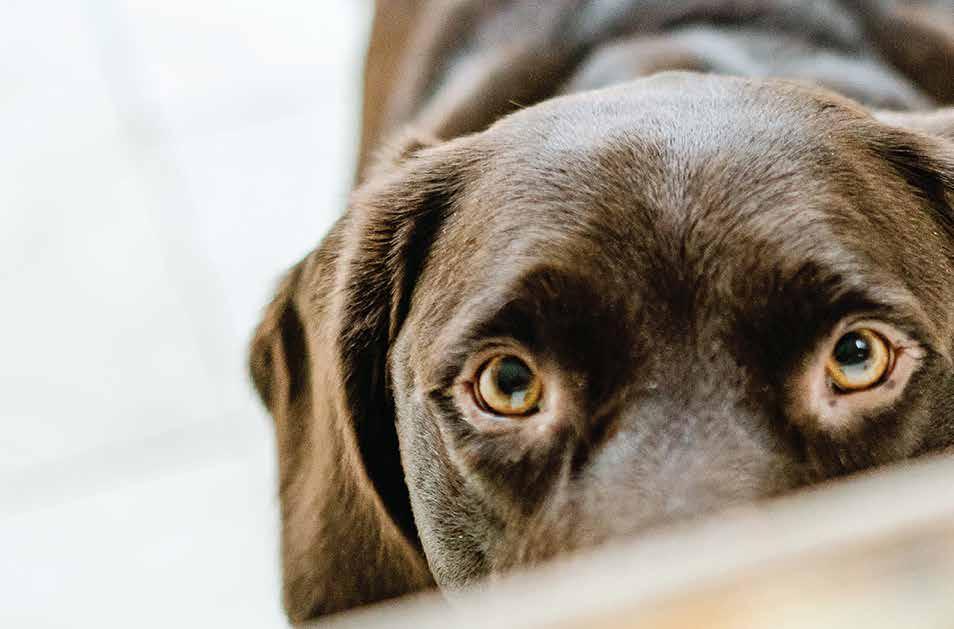
The obvious delight of my dogs spurred my enthusiasm but the practicalities of making it had to be fitted into a busy lifestyle and was always something else to do. I tried making in large batches but it occupied huge amounts of fridge or freezer space and there were times when I really needed it, only to find there wasn’t any left in the freezer, or I’d have to wait for one to defrost!
Commercially, the only bone broth that I could find for pets was frozen, and whilst I tried some excellent products, they still took up freezer space or weren’t as convenient as I wanted. I didn’t want a powder or concentrate, which had gone through a lot of processing, losing a lot of its goodness and taste in the manufacture.
This started me thinking…was there a way to produce and preserve this elixir while maintaining its natural quality?
Research & dedication
Fortunately, I didn’t have to start from scratch. I’ve worked in the pet industry for more than 15 years and previously ran a successful pet supplement company which introduced Scottish salmon oil to the UK market. Having sold this in 2021, I found myself considering the next challenge: could I develop a 100 percent natural, ambient cupboard-friendly bone broth?
It needed research and dedication: the right production, packaging, quality and green credentials were at the top of my wish list.
I identified that the best method for locking in freshness would be a Tetrapak style heat-sealed carton. I wanted all packaging to be fully sustainable and recyclable and found suitable sources including a bio-plastic made from sugar cane for the spout and cap. The brick shape of our cartons also makes for a lower carbon footprint – they fit neatly into boxes for dispatch.
Of course, these credentials had to be matched by the quality of the ingredients: meat produced from antibiotic and hormonefree grass-fed animals reared on cooperative farms and naturally filtered spring water.
I identified a suitable manufacturer that specialises in the production of stock and broth for human consumption and has a hi-tech approach to this traditional product. I have witnessed the production process in its state-of-the-art, energy efficient factory which enabled me to ‘power up’ my homemade efforts for the wider market.
The recipe is simple – there are just three ingredients: fresh meaty bones - a bi-product from human food production - apple cider vinegar, but just enough to ensure all the goodness is
F 14 | October 2022 - International Petfood
extracted from the bones, and naturally filtered water. But simple things deliver big benefits. It is packed full of collagen, amino acids and minerals, with a multitude of positives, including: Joint, skin/coat and gut health Recovery food for sick or elderly dogs and cats

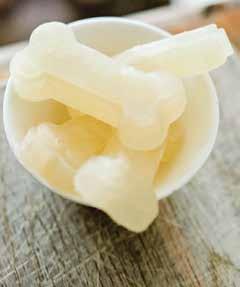
Encouraging hydration and eating – just add a little to the bowl Suitability for all ages, breeds and sizes Supplementing diets.
Using aseptic packaging means that Karnlea Bone Broth can be packed from fresh and is free from additives and preservatives. It can be used in a variety of ways. As a liquid, it can be poured over food and into water – fresh from the pack or reheated. Once chilled, it becomes jelly-like - an ideal topper. It can also be frozen for portion control or to use as treat.
Conveying the brand’s benefits
In September 2021, the first samples arrived. At the start of 2022, we launched the brand putting independent retailers front and centre of our marketing and distribution. My previous company had grown primarily through ecommerce but the products offered were more of an established nature – already understood by consumers.
I was aware that not every dog and cat owner may be familiar with bone broth. It was important to have ambassadors who could convey brand benefits and advise on how it should be used.
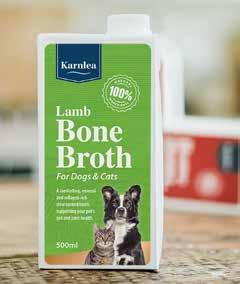
We launched with a beef flavour, five months later lamb was introduced and a chicken flavour will be added before the end of the year. Karnlea has grown faster than anticipated, we have become a member of the Pet Industry Federation, PetQuip and the Raw Feeding Veterinary Society. Although bone broth is a cooked product, its natural credentials attract raw feeders and complements such diets. We were also delighted to become finalists in a number of major industry awards – celebrating our innovation and sustainability achievements.
By the summer, we had reached a retail landmark: 100 outlets across the UK and Ireland from boutique stores to independent multiples, including Just For Pets which has more than 20 outlets. We were also invited to join Pedigree Wholesale which has become our UK wholesale partner, further extending opportunities for Karnlea to acquire new stockists.
It is a well-established and trusted company which has 50 years in the business. It manages more than 2500 accounts and has a proactive sales team which updates customers on new products and recommends ways to help independent retailers grow and flourish.
It has created a massive opportunity to extend our reach and allow retailers to ‘dip a toe into the water’ by trialling small quantities of our products as part of larger orders. In fact, its introduction was so positively received that its initial order was tripled only ten days in.
Delivering key messages
This relationship has also given us a trade spotlight, via Pedigree’s customer magazine and on its stand at PATS Telford, one of the UK’s leading pet industry exhibitions that was held at the end of September 2022.
Marketing and public relations has played a part in our success. It was vital to convey key messages around the product to introduce it to the industry and pet owners. We have built on the story of early success, underpinned by consistent messaging around Karnlea’s convenience and benefits.
We have been delighted with the media coverage that it has generated and the relationships it has helped forge within specific audience segments including the veterinary, training and sporting dog environments, as well as wider awareness within retail and consumer groups.
Early on, we were able to achieve a celebrity endorsement from popular comedy actress Diane Morgan, star of acclaimed Netflix series ‘After Life’ which poignantly features the relationship between a bereaved man (Ricky Gervais) and his dog.
So, what next? We continue to develop and evolve our product range with exciting plans for the future. As Karnlea grows, so does the level of our operation, exploring opportunities to launch within EU countries and wider markets.
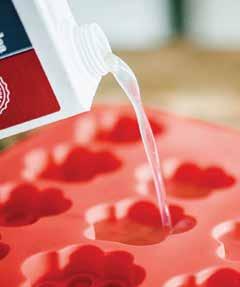
We plan to further heighten our profile and presence in the UK and Ireland and by exhibiting at key events including Crufts, PATS, Zoomark, as well as a number of smaller shows through 2023.
All this from an idea that began at the kitchen table. However big the Karnlea may become, as a pet lover with an obsessive interest in animal health, our journey will always be steered our ultimate passion - a love of pets.
For more information on Karnlea Bone Broth visit https://mymag.info/e/1670
International Petfood - October 2022 | 15 F
Tubular drag conveyors
Debunking six common petfood processing misconceptions
by Del Williams, Technical writer, Torrance, California
In the pet food processing industry, walking onto the production floor with conveyor tubes winding this way and that, in and out of machinery can seem to visitors like they have stepped into a Dr Seuss book or Willy Wonka and the Chocolate Factory movie.
For example, at a glance even industry veterans can be challenged to distinguish whether the conveyor tubes they see are screw (augur), pneumatic, vacuum, aeromechanical, tubular drag chain and disc or tubular drag cable and disc, unless they are the plant engineer or maintenance crew.
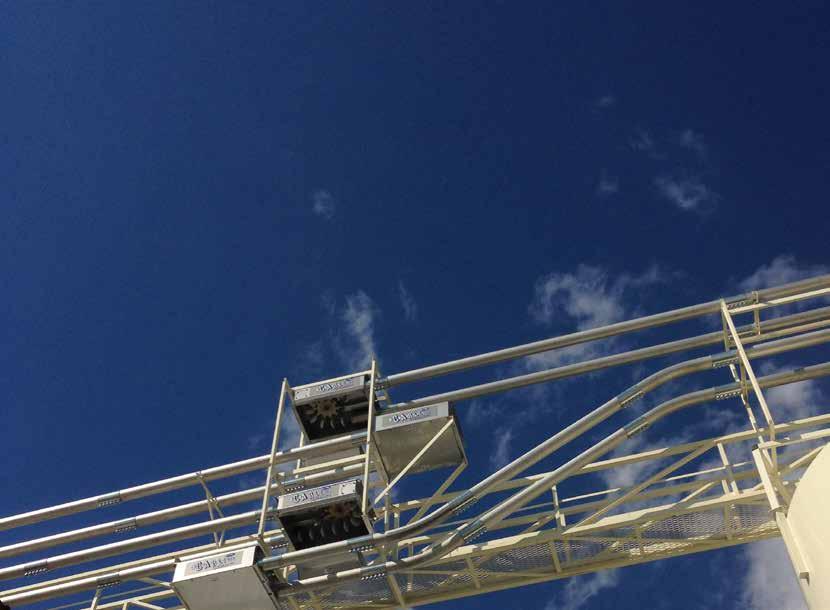
In fact, many specifiers, architects, engineers, and other professionals lack substantial technical or hands-on experience with such conveyors. This knowledge gap can result in extreme consequences when delicate pet food or precise blends must be reliably conveyed but instead, costly product destruction or inaccurate blends occur. Misconceptions about tubular drag cable and disc conveyors will be the focus of this assessment, addressing six widely held viewpoints in the industry.
Tubular drag cable conveyors gently move product through a sealed tube using a coated, flexible stainless-steel drag cable pulled through on a loop. Solid circular discs (flights) are attached to the cable, which push the product through the tube without the use of air. These conveyors excel in transporting delicate, precise blends for a wide variety of pet food types in versatile layouts and configurations.
Misconception #1 – ‘These conveyors are the same as a screw system’
“One of the most common misconceptions is that tubular drag cable and screw conveyors are identical, which is far from the case,” says Karl Seidel, marketing director of Cablevey Conveyors, a mechanical conveyor manufacturer that serves the pet food, specialty food, coffee, powder, and nut markets.
Screw systems, also known as auger conveyors, typically utilise a helical blade that moves granular materials within a tube. However, augurs can cause product damage and compromise blends. So, the units tend to be an option when material integrity is not critical, such as when conveying food waste.
“The key difference to look for is that augurs convey material with a helical screw. The transfer speed is directly proportional to the rotation speed of the screw,” Mr Seidel notes.
“On the other hand, tubular drag cable conveyors transfer material between two discs pulled by a sealed cable and are designed to protect delicate products and blends.”
Misconception #2 – ‘Conveyors are not designed to protect blends and mixes’
When transporting a blend of pet food product or supplement with a conveyor system, maintaining a consistent mix ratio is essential, whether a coarse mix, fine powder, or larger variablesized amalgams of different weights and shapes.
However, conventional conveyor systems are not specifically designed to precisely transport pet food blends without changing
The cable and disc systems gently and precisely convey pet food blends for a wide range of conditions
16 | October 2022 - International Petfood F
the mix ratio. Various product material weights, sizes, and shapes can shift and disperse in open systems like bucket conveyors, and vibration can cause the blended product to shift throughout transport.
Vacuum and pneumatic systems can cause smaller lightweight particles in a blend to move at different speeds than heavier or larger particulates, resulting in significant blend restructuring when the product reaches its discharge point.
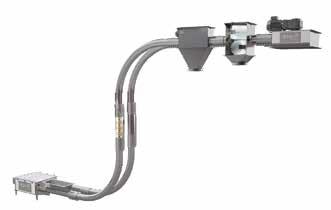
In contrast, tubular drag cable conveyors are engineered to maintain precise blend ratios, which can be important to pet food industry professionals such as nutritionists and quality control experts. As an example, according to Seidel, the company’s engineers have resolved the issue with a completely enclosed, compartmentalised tubular conveyor system.
“Not unlike an endless succession of train cars, each space between solid circular discs holds a predefined volume of product. Based on the manufacturer’s specifications and requirements, engineers can calculate the optimal speed of the system, the most appropriate tube angles, and the proper construction design to guarantee their blended product remains consistent from input to discharge, even at high volumes,” says Mr Seidel, whose company has designed, engineered, and serviced enclosed cable and disc tube conveyors for 50 years in over 66 countries.
Misconception #3 – ‘Conveyors cannot carry moist, hot, or frozen material’
Tubular drag cable systems like Cablevey’s convey pet food materials in a wide variety of forms and states including whole, powdered, pureed, chopped, moist, hot, and frozen with throughput rates up to 80,000 lbs per hour. The systems can convey material with high moisture content when some water is
being conveyed along with the product.
While the tubular conveyors are constructed of plastic components, the standard units are designed to operate at 180° F (82°C) with a high-temperature option up to 230° F (110°C), so can receive the product from ovens, fryers, or dryers, according to Seidel.
Even frozen products can be conveyed, although it is important that the temperature is controlled along the path, so no melting occurs with water freezing later in the system.
Misconception #4 – ‘Conveyor footprint and expansion limitations’

Some in the pet food industry do not consider tubular conveyors because they mistakenly believe that the systems cannot fit within their facility’s available space or accommodate its layout, which may include significant inclines or elevation changes. However, this is not the case.
Modular systems like tubular drag cable conveyors are an excellent option for complex layouts that could require curves or changes in direction, according to Seidel.

“Tubular conveyors do not have to be installed at 90 degrees and can use angles so can go in between, around, above or below existing equipment or other obstacles. That is important for existing facilities that may not have the flexibility to move something out of the way,” says Mr Seidel.
In addition, tubular conveyors are quite space efficient. Mr Seidel notes that to conserve space, the conveyor turnaround and its inlet can stand on end, so it is only one foot across instead of three. If conveyor discharge occurs best using gravity, tubing can be run through walls and discharge out of the building roof, which saves interior space.

International Petfood - October 2022 | 17 F Decades of Global Experience. 50 Years in Business 66 Countries Served 1,000+ Products Moved 32,000+ Conveyors Commissioned operation our systems are hard to compete against. Cablevey Conveyors Gentle Clean Reliable Conveying The Heart of the System CABLE & DISCS Cablevey® Conveyors is a registered trademark of Intraco, Inc. 07/2022 Worldwide Experts in Cable and Disc Conveying Solutions +1(641) 673-8451 www.cablevey.com www.cablevey.com +1(641) 673-8451 info@cablevey.com
Misconception #6 – ‘Conveyors are designed for indoor installation only’
It is a misconception that tubular conveyors are only installed indoors. In fact, it is common to see portions of equipment extending outdoors. This may occur when conveying product from outside to inside such as when unloading raw material from a truck or railcar or loading finished product into similar transport.
Misconception #5 – “Cleaning requires dismantling and extended downtime’
Between product changeovers, many traditional conveyor systems must be disassembled, cleaned, or soaked, and then reassembled – a labour and time-intensive process. However, this is not necessary for tubular conveyors.
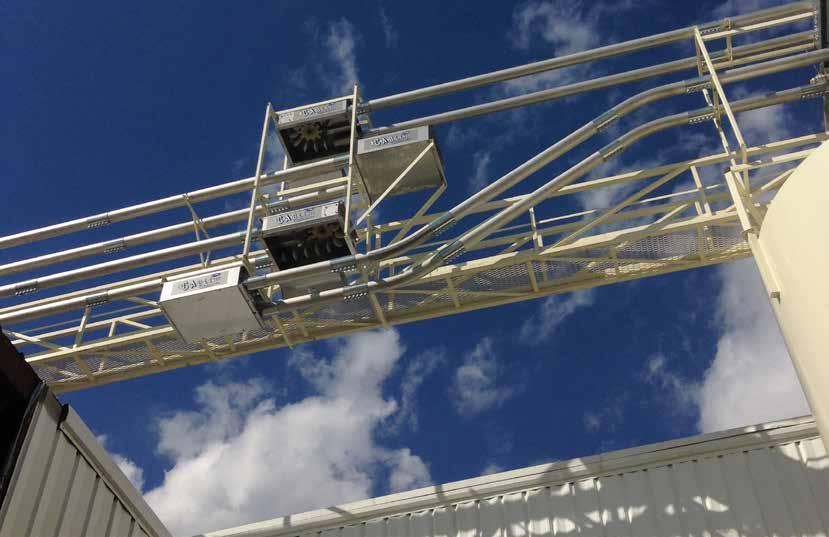
With tubular conveyors dry, wet, and in-line cleaning options are available, according to Clint Hudson, Cablevey Conveyors Engineering Manager. Amongst dry options, brush boxes and air-knives can clean the cable. Brushes and wipers can wash the tubes. To sanitise, a sponge soaked in sanitiser can be used without getting the system fully wet.
For the most thorough cleansing, the cable conveyor’s wet cleaning process internally washes the tube in several steps, starting with a water rinse followed by a foaming agent, a sanitising rinse, and a final water rinse.
Once the system is thoroughly flushed out, drying is achieved by attaching urethane wipers to the tubular conveyor’s discs, which ‘act like a squeegee’ to remove any residual water.
Materials may also travel from a feed mill to a production or packaging room which may be ten feet or even one hundred feet away.
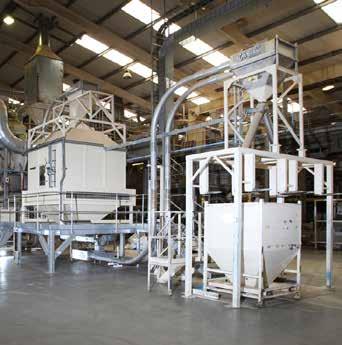
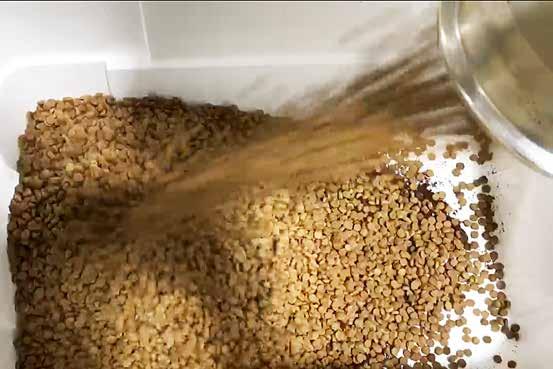
According to Mr Hudson, when some of the equipment is utilised outdoors, and when the company is moving a moist product, it can be helpful to wrap the tubes in heat tape to prevent moisture from condensing or freezing in the tubes.
The conveyor manufacturer can also provide a range of accommodations to account for the effects of wind, dust, rain, insects, and direct sunlight. Whilst first impressions of tubular drag cable and disc conveyors can evoke images of Dr Seuss or Willy Wonka’s chocolate factory, the equipment has been carefully designed and engineered for industrial performance, reliably conveying delicate pet food products and blends in a variety of conditions.
With an understanding of the true potential of these conveyors, industry professionals will be well-positioned to take advantage of the systems’ abilities to decrease downtime and increase quality production.
Cablevey Conveyors 4-inch diameter tubular conveyor & Cablevey Conveyors installation tube
Cablevey Conveyors pet food processing
Cablevey Conveyors indoor-outdoor conveying system
18 | October 2022 - International Petfood F
Your industry training platform





The Online Milling School provides a comprehensive 12-week remote learning experience covering all aspects of feed milling, from raw material handling through to final packaging and dispatch. www.onlinemillingschool.com FISH FARMING TECHNOLOGY International Petfood - October 2022 | 19 F
Alternative Proteins
Supporting nutrition that’s better for pets & the planet
by ADM, USA
With pets increasingly considered part of the family, this humanisation trend is rapidly expanding around the world. More and more, conscientious consumers demand that their pets eat sustainable, responsibly produced foods like they eat themselves.
This shift is also linked to the rising trend of flexitarianism, in which people aim to add more plants and alternative proteins to their diets, rather than avoiding animal products entirely.
For pet nutrition, this means more consumers are purchasing foods and treats made with soy, corn, wheat and pea. It’s also a growing space for insect proteins, particularly as the Association of American Feed Control Officials (AAFCO) has approved the use of dried black soldier fly larvae (BSFL) for adult dog food and treats in the US market, and BSFL oil is tentatively approved for adult dogs. BSFL use in dog and cat food has already been approved by the European Food Safety Authority (EFSA).
An absolute necessity
ADM helps petfood manufacturers respond to the growing need for alternative proteins through strategic partnerships that are unlocking the potential of novel, high-quality and sustainable solutions.

ADM Ventures, its corporate venture capital arm, is investing in
category-leading startups like Innovafeed that are at the forefront of low-carbon pet food innovation. This investment supports accelerated deployment of Innovafeed’s circular production technology in the United States.
“At a time when conservation of our natural resources and the preservation of our environment are becoming an absolute necessity, we are convinced that the insect industry is a solution for our planet’s food production needs,” comments Clément Ray, CEO of Innovafeed.
“Our partnership with ADM underscores the role of Innovafeed’s cutting-edge technology and the insect industry’s ability to transform the food system into a more sustainable one.”
Upcycling feed by products
Work is underway to implement Innovafeed’s industrial symbiosis model next to ADM’s grain processing plant and headquarters in Illinois, USA. ADM’s facility will provide feedstock for BSFL as well as waste heat and water, which enables Innovafeed to upcycle feed byproducts and recover unused energy to avoid consumption of fossil fuels.
This model has potential to save Innovafeed partners approximately 120 gigawatt hours (GWh) per year, or the annual energy consumption of more than 10 thousand households.
Furthermore, ADM and Innovafeed have entered a strategic partnership to commercialize the use of dried whole black soldier fly larvae as an alternative protein for the North American pet food industry. BSFL oil will also be developed as a novel source of fat for pet nutrition products.
F 20 | October 2022 - International Petfood
Consumer acceptance is expanding


Innovafeed will leverage ADM expertise in petfood and treat formulation and its partnerships with leading research institutions to commercialise BSFL for the pet industry. A pilot research facility, also located in Decatur, will be constructed to enable joint research and development on dog food formulation, such as palatability studies and protein performance.










“Our pet nutrition experts will collaborate with the Innovafeed team and other research scientists to unlock the benefits of black soldier fly larvae as an alternative protein for pets,” says Jorge Martinez Carrillo, President of ADM’s Pet Nutrition business.
“This research is an important step forward as it will allow the pet food industry to offer science-backed ingredients with demonstrated nutritional benefits while meeting the expectations of today’s discerning pet parents.”
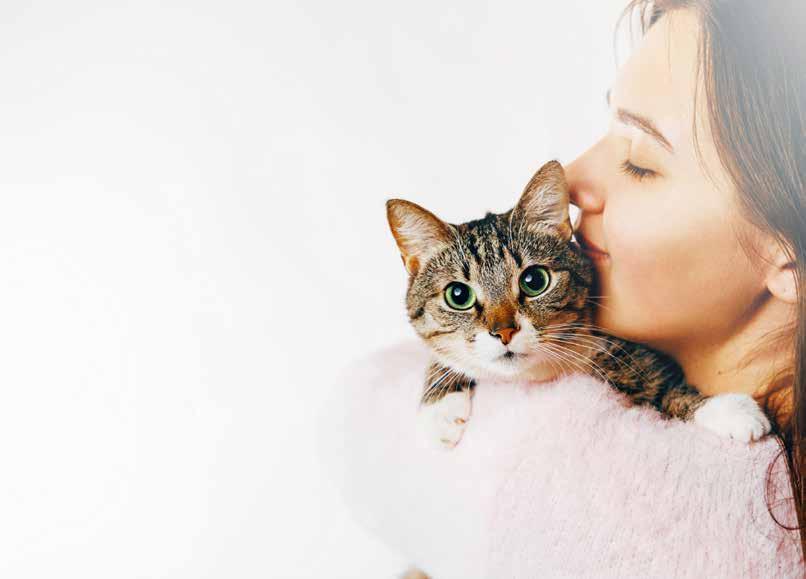
Consumer acceptance is expanding for this new source of protein for pet foods and treats. Over the last few years there’s been more evidence indicating consumers are supportive of insect protein used for pet and animal nutrition.




“Insect-based ingredients provide high-quality nutritional content with a smaller carbon footprint and land requirement than other types of protein,” notes Amy McCarthy, ADM’s Vice President of Pet Nutrition. “Although insect protein is currently a premium ingredient, we look forward to increased supply fueling increased demand among mainstream consumers.”
With this partnership, ADM is building on the pioneering work completed by Innovafeed in Europe by unlocking the potential of BSFL as a novel ingredient for the North American pet food industry.
The company will be among the first petfood ingredient suppliers to offer black soldier fly protein and oil at scale nationwide.




World








Leaders in Microwave Moisture Measurement Hydro-Probe XT Hoppers, chutes, belt conveyors Hydro-Mix XT Mixers, conveyors, Ducting System Hydro-Mix XT-EX Certified for use in ATEX, IECEx and NEC/CSA Hazardous Locations (Dust) Hydro-Mix HT Mixers, conveyors, Ducting System, High Temperature enquiries@hydronix.com www.hydronix.com Contact us for more details Hydronix-Petfood-Advert Jan 2022 215x140mm.indd 1 20/12/2021 19:04International Petfood - October 2022 | 21 F
Petflation
How inflation is affecting the petfood industry & pet owners
 by Jyothsna Nelloolichalil, Managing Editor, International Petfood magazine
by Jyothsna Nelloolichalil, Managing Editor, International Petfood magazine
The pandemic registered a record surge in pet ownership in the UK and this significantly boosted the already solid petfood market in the country. While the Covid-19 pandemic has shifted pet ownership into a higher gear in the past couple of years, Britons are known as a nation of pet-lovers with 34 percent of households owning a dog, 28 percent owning a cat, and the estimated number of households with pets of all kinds now standing at 17.4m as per the statistics by pet Food Manufacturers Association(PFMA).
Recently, inflation has begun to hit the country and pet products prices shot up by a noticeable margin. Statistics from Office of National Statistics (ONS) revealed that Britishers are paying 8.4 percent more for per products now than they were a year before.
It’s not just the UK being hit by the inflation either, with the US also seeing a spike in the productions. According to the US Bureau of Statistics, the Consumer Price Index (CPI) increased 8.5 percent compared to 2021 levels. This is the largest rise since 1981.
The escalating costs are causing great anxiety among many pet owners. According to a Rover analysis, 70 percent of those asked said they are already feeling the pinch and are paying extra on food and treats for their pet. Additionally, a poll of pet owners found that 73 percent were very concerned about price increases.
A significant cost increase
There is no immediate end in sight to price increases. As a result, many pet owners may decide to reduce their expenditure on pet food and treats. The significant cost increase has affected the petfood producers as well.
The price for everything for raw materials to transportation has gone up and this has made it extremely challenging for Petfood manufacturers to sustain in the profit margins and also staying competitive in the market.
Pet owners are struggling with the ‘cost of living’ crisis that many of them has to rely on food banks to feed their furry companions. Animal charity RSPCA provided meals for 19,500 dogs and cats in the north of England last month, up from around 9000 in January.
In the south of Wales, it’s a similar story with Pet Foodbank Service delivering 46,000 meals for animals so far this year, 25% more than during the same period of 2021. It’s a sombre indication of how the biggest inflation in forty years is affecting British consumers’ wellbeing and burdening those who have the most mouths to feed.
The war between two significant grain producers of the world has indeed affected the petfood industry along with the agricultural industry. Many people are experiencing a shift in circumstances as a result of purchasing or adopting pets during the epidemic to maximise lockdown living.
RSPCA has partnered with 59 food banks catering to people in the north of England and expects to grow that to at least 90 by the end of the year.
F 22 | October 2022 - International Petfood
Giving up pets
The apparent difficult conditions has led the pet owners to abandon their pets to cope with living crisis. There are reports on 20 puppies being discovered in a box late last month in Essex, UK.
Since the onset of the epidemic, there has been an increase in animal maltreatment, and the RSPCA is worried that the cost-of-living crisis may result in even more cruelty and neglect.
RSPCA research shows that, in April 2021, there were around 4400 searches per month online around ‘giving up pets’ and, in April 2022, this rose by 50 per cent to a high of 6600.






RSPCA suggests that finding cheaper foods to meet your pets need and also mixing it with other products you buy to keep them lasting longer is a short-term solution. But the Petfood producers and the industry together have to come up with more innovative solution to tackle effect of inflation.


Even though the situation seems too difficult at present, what is certain is that pet food businesses will continue to evolve and advance in the development of new foods for pets.
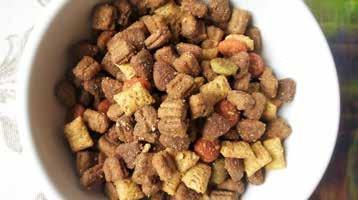






Proven Performance Put Your Conveyor on Pole Position! • Reduce Downtime & Maintenance Costs • Quick and Easy Chain Assembly • Bolt on Flight Replacement (No Welding) • Forged and Hardened Chain Links DOWNTIME IS A RACE... TIME IS MONEY 'N' Go™ Drag Conveyor Chain www.go4b.com www.go4b.com 4B GROUP Bolt'n'Go Advet (Half Page) - No Email_Layout 1 30/06/2015 12:17 Page 1
International Petfood - October 2022 | 23 F
An examination of their nutrition & feeding habits

Did you know?
Reptiles are among the longest-lived species on the planet. The Aldabra tortoise can live for over 150 years! Reptiles first appear in the fossil record 315 million years ago. Reptiles do not have sweat glands and thus are not slimy, instead their skin is usually cool and dry.
Reptiles
are cold blooded vertebrates who are members of the class Reptilia. Living reptiles comprise turtles, crocodiles, lizards, snakes and rhynchocephalians. They belong to the tetrapod vertebrate’s category, meaning that they have four legs or are descended from four legged ancestors.
From turtles to snakes, reptiles make great pets as many find them surprisingly cute. Although we know that they make interesting pets, not much is known about if the nutritional needs of reptiles are met by their pet owners. But it is important to make sure that your scaly friend receives adequate nutrition since there not many resources available on reptile food.
A number of things can affect the feeding behaviours of reptiles, from temperature and humidity, to stress, cage furniture and nutrition intake. The physical conditions of the reptile enclosure and sufficient quantity of feeding areas (if enclosure is shared with other reptiles) are important in encouraging adequate feeding habits.
Reptiles are fed a variety of prey, including rabbits, rats, mice, small birds, larvae, and insects. It’s recommended that prey should be sourced from commercial breeding centres, and offered as dead to reptiles, to prevent injury to the predators.
Knowing the reptile species’ habits in the wild is essential and relevant to informing on what foods and nutrient levels are appropriate for their diet. Providing two or more prey species for feed is beneficial in delivering a wider variety of nutritional benefits, as well as limiting dependence on a single prey species (which could present issues if the specific species becomes difficult to obtain), however this is dependent on what is nutritionally appropriate for the specific predator’s needs.
by Niamh Cassidy, International Petfood magazine, UK
Categorised in four groups
Reptiles are categorised in four groups, carnivores, insectivores, herbivores or omnivores. Carnivores are relatively easy to give a balanced diet and less likely to have nutritional deficiencies, since they eat the whole animals, which aren’t in short supply.
They should be fed frozen, thawed or freshly killed prey animals. Feeding thawed food is especially beneficial to reptiles such as snakes, who may detect small temperature changes, as it encourages and stimulates reluctant feeders to eat.
Insectivores include animals that are commonly fed insects including crickets, mealworms, wax worms and inch worms. It’s recommended to feed these reptiles on a high calcium diet and to stick with well-known brands, whilst dusting crickets and mealworms with vitamins (containing D3) and calcium (with no additional vitamin D).
Some insectivores may also eat pinkie mice, wingless fruit flies or earthworms for additional nutrients, and others have unique specialised diets that may be difficult or impossible to provide regularly (for example the horned lizard needs a specific species of ants), in which case they should not be purchased and kept in captivity.
Herbivores require high fibre diets, with 90 to 98 percent of calories from plants, and should be fed a mixture of dark leafy greens with vegetables and fruits added. One way this can be provided with fresh grass or grass hay.
Most herbivores (and all omnivores) require an additional protein source, which may include hard-boiled eggs (with the shell), trout chow, tofu, alfalfa pellets, and cooked white meats. Feeding too much animal protein to herbivores can lead to kidney disease, so should only be done in moderation (once or twice a week).
24 | October 2022 - International Petfood F
The most important nutrient
Water is the most important nutrient for reptilians. Knowing the specific requirements of the reptile when it comes to water containers is pertinent, for example some reptiles won’t drink from bowls, and instead need mist sprayed on plants or the side of the cage, or even water dropped on a leaf.
Water containers should be deep enough to bathe (necessary to aid the proper shedding of skin for some reptiles) and shallow enough to exit easily and must be cleaned regularly and disinfected weekly.
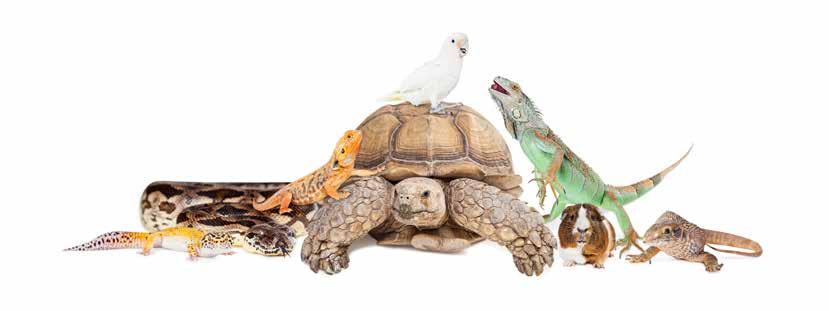
Reptile food must contain all the essential amino acids to demonstrate biological value and provide an adequate energy source. Essential fatty acids are also crucial for cellular integrity, but it’s important to not feed too many to avoid obesity.
Carbohydrates and fibre are important for herbivores for rapid energy
production.
The key vitamins needed in reptile food are (fat-soluble) Vitamin A, D, E and K, as well as (water soluble) B vitamin complex and vitamin C. Another possibility for providing the necessary vitamin D absorption in the months where exposure to unfiltered natural sunlight is limited ultraviolet light.
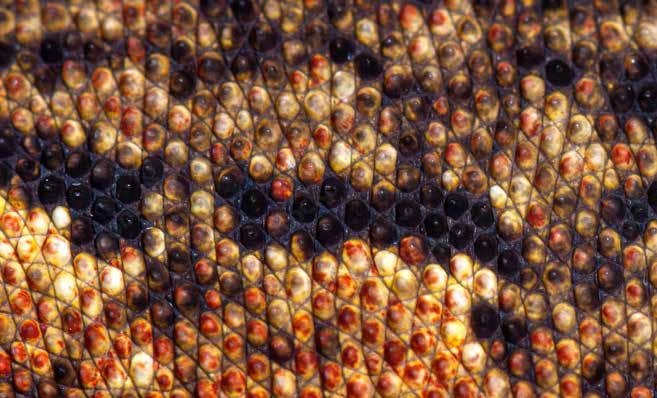
Preventing disease
An important consideration when feeding reptiles prey is preventing disease and the transmission of parasites. Paying attention to the freezing and thawing process in storing food is key. When freezing rats and mice, ensure the freeze storage conditions are optimal, keeping the temperature at -20°C and in thick plastic bags to prevent deterioration and help maintain the animal surface texture to be similar to live animals. When Thawing,
seal the food in a zip lock bag, and place it in water that is just warmer than the prey animal’s normal body temperature. Make sure to use a cooler and ensure water loss is minimal (hydration of prey is crucial).
Research is lacking
Research on the nutrient requirements of reptiles is lacking, so there is no official scientific justification for product superiority. Manufactured diets are potentially simpler and more economical compared to fresh produce and live prey diets.
That said, they might not have rational formulas and lack micronutrient concentrations from the manufacturer. So, when using commercial products, it is advisable to only get products that provide information on the formulations and specific nutrient requirements.
International Petfood - October 2022 | 25 F
Using yeast to improve the immune health of pets
With research facilities and manufacturers located throughout USA, Europe and Asia, Phileo is a company that has exclusive expertise that ranges over 140 years of research and development at their disposal.
This expertise spans across various fields, ensuring that they cover the needed knowledge to create the best products possible for pets, which includes microbiology, immunology and formulation processes.
Phileo has an ambition and passion for building a world where animal care is a main priority so that they can raise healthy animals, all while trying to spare the planets resources and energy.
“We are on the ground, together, to help define new standards in terms of animal nutrition and build a sustainable agri-food future,” says Frédérique Clusel, General Manager at Phileo by Lesaffre.
The Petsaf programme
Recognising the importance of pets in the household and how they deserve the best care possible, Phileo works in the crossroads of health and nutrition, providing solutions that work harmoniously with the pet’s biological system to preserve and enhance their health and well-being.
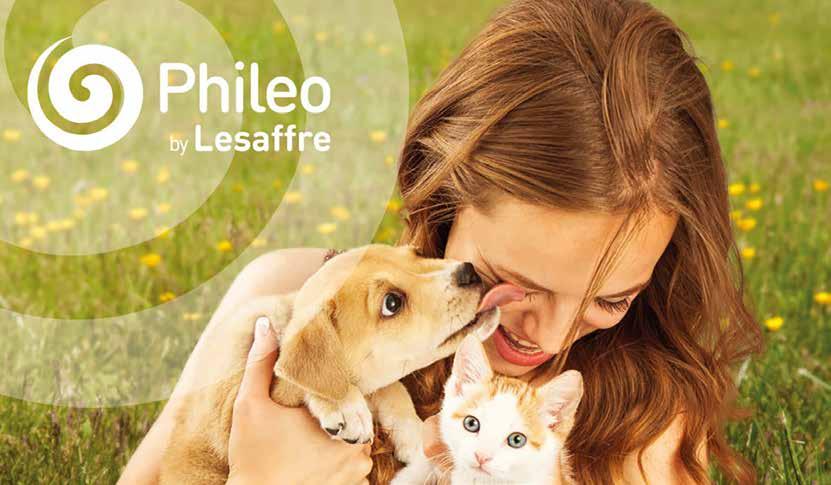
Petsaf programme works with this in mind to allow manufacturers to select Phileo solutions to address main pet industry life
stages and health claims. There are four key areas that the programme focuses on: optimising digestive health, improving immune protection, reducing stress, and sustainable functional nutrition.
Optimising digestive health means identifying the pathogeny of gut disorders, which Phileo has split it into four pillars. The four pillars interact closely with one another and when one pillar is affected, others usually become affected soon after.
Some can even be affected after the recovery and stabilisation of the first affected pillar. These four pillars consist of: maintaining beneficial microbiota, optimising intestinal barrier integrity, optimising the immune system, and reducing pathogen pressure.
Improving immune health in pets, at all life stages, is critical as it helps to make sure that pets, even those with weak or not fully developed immune systems, have a better chance of fighting and preventing illnesses and diseases. Reducing stress also reduces chances of high concentration of oxidative radicals in animal cells. This, overtime, can overwhelm physiological defence systems and can compromise the immune systems in our pets.
launched in stores feature digestive health claims. Intestinal health for pets can be affected by a variety of things, age, stress, hygiene and more. Diet is also a key factor
and manufacturers are providing answers and solutions to pet owners to suit their pets’ specific needs.
Gut health & yeast
More than half of the new pet feed products Dedicated to being one of the manufacturers that provides positive results, Phileo is developing tailor-made solutions to preventative pet care. They allow a limited and responsible use of antibiotics to reduce the amount of unnecessary waste on the planet and spare our global resources.
With the use of beneficial microorganisms to naturally improve animal nutrition, Phileo also researches and believes that yeast and bacteria with advanced fermentation technology is the future of animal health.
A type of yeast probiotic researched and developed by Phileo is Safmannan, which is not only used for pets, but for poultry and farmed fish also. Adding Safmannan to an animal’s diet may help support gastrointestinal balance, preserve gut integrity, modulate immunity, and reduce the detrimental effects of stress.
The yeast probiotic and active fractions from primary culture (selected and developed for animal care) cover various pet food market segments, such as pet life stages or digestive disorders, weight management and more.
Industry PROFILE 26 | October 2022 - International Petfood
Your industry training platform


Learn more – Learn onsite Enroll in the 12-week Course

The

Online Milling School provides a comprehensive 12-week remote learning experience covering all aspects of feed mill ing, from raw material handling through to final packaging and dispatch. www.onlinemillingschool.com FISH FARMING TECHNOLOGY International Petfood - October 2022 | 27
Industry Training
Petfood and Aquafeed Workshop by Bühler
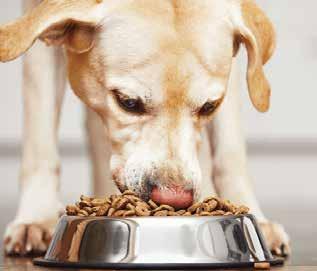
Running from September 20 – 23, the Pet Food and Aquafeed Workshop took place at Bühler’s headquarters in Uzwil, Switzerland.
An extensive four-day training event, participants were given the opportunity to continue their education in extrusion production, whilst observing practical demonstrations with Bühler’s cutting edge technology.
Designed for individuals who are actively involved in the technological aspects and feasibility of extrusion production for aqua/petfood, such as operation supervisors, engineering or R&D personnel, the workshop provided attendees with an introduction to the basics of extrusion technology, focusing on preconditioning, energy, moisture and mass flow balance. The sessions were run by experienced extrusion experts and included hands-on training for theoretical aspects. The training was delivered in the style of a hands-on workshop, discussing topics such as Single v/s twin screw extrusion technology, screw configuration, die and knife technology, SME control, product density control and its significance in vacuum coating.
Additional topics covered in the workshop includes microfeed for aqua as well as fresh meat addition and filled pillow treats for pet food. There were also practical demonstrations to help attendees apply everything they learnt in the company’s modern pilot plant.
The demonstration featured Bühler’s Twin-screw extruder,
a piece of equipment that is a multifunctional PolyTwin, EcoTwin and CompacTwin twin-screw extruder that offers flexible, reliable 24/7 processing for breakfast cereals, food ingredients, petfood and aquafeed products.
Demonstrating the benefits of extrusion
The sessions were administered in English, with understanding how to apply the opportunity of extrusion technology for various products the goal of this training event.
The course took place at Bühler’s Extrusion Application Centre, a multi-purpose lab where tests are conducted on food and animal feed, for example, checking new recipes, product shapes or textures.
The food trials that typically take place in this lab include those involving cereals, extruded breadcrumbs, reconstituted rice, flavouring, modified starch and flour, soybeans, sunflower seeds, peas and new proteins.

The tests use the company’s latest technology to run analyses on pet food, animal feed and aqua food for freshwater and marine species. Using cereals, pulses, bypass proteins, fish feeds, pet food treats, texturisation of proteins, and any other specific topics of interest from participants, the many benefits of this concept were demonstrated.
Once attendees completed the four-day course, they were awarded a certificate of participation.
TRAINING
28 | October 2022 - International Petfood
Troubleshooting
Part 10: The extruder barrel continued
Sinceone of the topics intended for this issue is the extruder barrel and due to space limitations in the opening editorial, let us continue discussing it here. The extruder barrel, either single or twin is the section where the majority of cooking is achieved.
The definition of extrusion, as penned by Galen Rokey, goes: “Extrusion cooking is the process where expandable biopolymers such as protein and starch are plasticised in a tube by a combination of heat, shear, and pressure resulting in the denaturation of the protein, the gelatinisation of the starch, and the exothermic expansion of the extrudate.”
Now that is a mouthful!
You can see from the definition that the extruder barrel is the process. Creating heat, shear and pressure to yield the final product characteristics desired. Obviously, the preconditioner is also a big part preparing the mix for extrusion, some better than others, which create the difference in what can be produced in various designed extruders.
The extruder barrel can be broken down into three basic sections, thirds. Inlet, kneading and final cooking sections. The inlet is designed to get the mix in the barrel and move it forward, the kneading section is where added water and steam is mixed in as well as controlled resistance from screw design begin to heat and shear the product to higher temperatures.
The final cooking zone is where the material is actually melted into a plastic like substance and pressures are created for die flow and expansion if desired.
Singles vs twin screw designs, singles screw barrels have no bounds other than the screw fits into the barrel, different screw pitches increasing or decreasing, the number of flights, flight depth, cut flight screws, kneading lobes are all used and do create the desired process for most extruded petfoods.
Sherlocks or flow control devices are usually standard in single screw extruders. Heads or sleeves either are straight ribbed or spiral in design which interact with the screws to either promote forward flow or back flow. Back flow is the restriction of flow for shear, cook and temperature development.
Tin screw extruders are restricted to the flights intermeshing, there are many designs available. Restricting flow is needed in twin screw extruders as they are a more positive pump.
Typically, higher meat and fat levels in the formula are possible. Some twin designs allow for nearly 70 percent fresh meat addition. If you have any questions, you can send them in to editorial@perendale.co.uk and we will be happy to write a more complete article on the topic of your choice.
Previously on Troubleshooting...
1. Density
An examination of product density and its relationship with moisture levels, heating, cooling feeder screw rate and automation.
2. Non-uniform and rough appearance
A guide to understanding the science involved in improving the art of making products of all the same size.
3. Extrusion dies
This article takes a look at aspects of the process including high, medium and low shear as well the adjustments required when producing feed for small mammals.
4. Dryers
The dryer is without a doubt one of the machines in the system which greatly impacts the bottom line.
5. The Extruder Barrel - Part 1
Forming extruders are used for some select products –thus this part of the discussion centres on single and twin designs.
6. Cook in the Extruder Barrel – part 2
As discussed last month, the extruder barrel has a number of functions, but the main goal is to finalise the cook, yield the desired shape with the density target.
7. Coating
The coating process has a few areas of importance, with this edition of ‘Troubleshooting’ exploring the most important of these.
8. Expanded cat food
Dry expanded cat food production is similar to dog food production, but there are some differences, with this edition exploring a choice selection of these.
9. Extrusion during operation
This month we discuss steam input into the conditioner. During the water addition process, the steam is usually in the two-bar range.
TROUBLESHOOTING
International Petfood - October 2022 | 29
dust)
Innovations this month

October 2022
This month’s Production Showcase section features equipment and ingredients that will help in the production of petfood, taking you right from the recipe book, right up until until your product is ready to leave your factory door. If you would like your product or service to appear on this page in a future edition of International Petfood magazine, then please contact us at editorial@perendale.co.uk
The palletizer - Series 500 / 1000 GRIP by Behn & Bates
The palletizer - Series 500 / 1000 GRIP palletises bags that need to be overlapped on the layer. Therefore, it is especially suitable for palletising difficult-to-handle bags that are not very full or contain extremely fluid products.
The filled bags are handled one-by-one by a robotic gripping arm and deposited on a double false pallet. The completed layer is squared before being placed onto the pallet. Each layer is then pressed individually.
The position of the bags is determined automatically depending on the pallet size, the bag dimensions and the chosen palletising pattern. This series offers two models for working rates of 300 to 1200 bags/h.
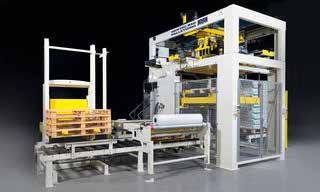
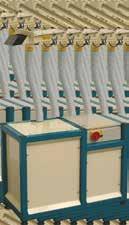
Its user-friendly machine operation with integrated touch screen and the software with automatic pallet calculation. It is also equipped with a reliable full bag take-over by the full bag gripper equipped with special aligning plates.

https://www.behnbates.com/en/products/palletizing/palletizer-series500-1000-grip/

PRODUCTION
Made in Britain, Trusted Worldwide. We are Laboratory Inline OLM HN® Portable WE PELLETS (not
30 | October 2022 - International Petfood
GKM Ultimate Tumbler Screener
The Kemutec GKM Tumble Screener is a type of flat deck screener which is designed to separate, de-dust and control screen dry powders and granular materials effectively and gently.
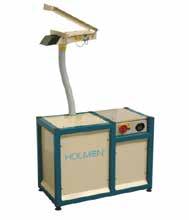
Constructed as a modular, multi-deck machine, this machine offers operational flexibility and enables up to seven fractions to be separated simultaneously from a mixture containing different particle sizes. It is ideal for achieving consistent product quality with high feed rates and more difficult to screen, lightweight products.
GKM Tumble Screeners have mesh screens down to 20 microns and are suitable for applications with particle size feed sizes from one micron up to 20mm.
Advantages include being easy to use, clean and maintain. It has a low power consumption, ultrasonic cleaning which provides contaminationfree screening, and the ability to adapt depending on the application and customer requirements.
https://www.kemutec. com/product/gkmultimate-tumbler-screenermultideck-screening/#. Yt56RsHML2I
Magnum ST Series extruders by Wenger
By utilising parallel-shaft twin screws, the Magnum ST Series extruders by Wenger are ideal for unique processes that require extreme operating parameters including higher torque at lower speeds for extreme processes.
The Magnum ST Series is especially suited for applications with extreme product viscosities, processes requiring high SME inputs, continuous physical and chemical reactions dispersive mixing applications.
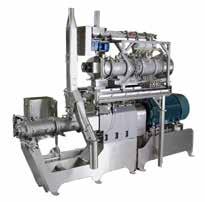
The Magnum ST Series is ideal for applications requiring high torque at low extruder shaft speeds and for jobs that require increased rate potential, where rate is dependent on SME and shaft speed.
Unique to Wenger extruders, the overhead rail system permits operators to conveniently add process tools or remove extruder barrel components without heavy lifting or the need for additional equipment. The rail system also supports the hood, knife and additional options for cleaner floor space and greater durability.
https://wenger.com/extruders-dryers/extruders/magnum-st
The Holmen NHP300 by Tekpro
The Holmen NHP300 is a fully automatic pellet durability test used for calculating the pellet durability index (PDI) of animal feed pellets, by simulating the transportation environment from mill to trough.
The NHP300 automatically extracts and tests samples from a busy production line and displays the results in the NHP300 Windows control software, or alternatively in your existing mill management system. After the test, samples can be returned to the production line or discharged into a waste container without operator intervention.
By testing pellets during the production process, near real time results can be used to help maintain the quality of output, by adjusting the mills settings at a time that will save energy and minimise waste.
Fitted as standard with a 2.5mm diameter perforated hopper, the NHP300 is ideal for testing pellets with a diameter of between 3 and 12mm.
https://www.tekpro.com/ holmen/holmen-nhp300pellet-durability-tester/
SEE YOUR PRODUCTS IN THIS MAGAZINE
If you produce a product that you think we should feature in International Petfood magazine, please get in touch

To be considered for inclusion in the magazine please;
Email: editorial@perendale.co.uk
Include 75 words about the product along with a high resolution image and a web link to more information about the product in your email

Ribbon Mixers by Anderson Feed Technology
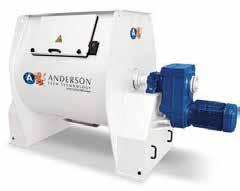
The horizontal ribbon mixers are highly efficient batch mixers which can mix with accuracy in a very short period. The mixer consists of a ‘tulip’-shaped mixing and a shaft with mixing spirals. The ribbons move the materials in opposite direction. The geometric design guarantees an intensive mixing process with a low rotation speed. This results in an accuracy of 1:100.000 in a mixing time cap of three-to-four minutes.
Special attention has been paid to hygienic aspects. Connections inside the machine are smooth to prevent pollution and cross contamination. The construction of the shaft with the bars that hold the spirals is done with an absolute minimum of welding, avoiding clamps with external bolts for hygiene reasons.
Ribbon mixers has safety lockers and a pneumatic outlet side for dosed output. It has an average mixing time of 180-240 seconds and is consumes low energy.
https://www. andersonfeedtech. com/products/ mixing/ribbonmixers/
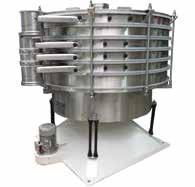
FOCUS
International Petfood - October 2022 | 31
more largely in Europe, one of the main aims of Space was to tackle early on this subject linked to climate change. There are also concerns over rising production costs and certain solutions were found in the halls of SPACE.
professionals as well as students about the issues that the sector faces such as the climate crisis, food sovereignty and produce remuneration.
“Drought and feedstock and energy inflation create one of the greatest stresses for a
show on ‘Herbivores, a source of solutions!’
The main conclusion drawn was that being responsible for a high proportion of greenhouse gases, breeders must rise to the challenge of climate change but also grasp the opportunities.
Another problem that was discussed is food
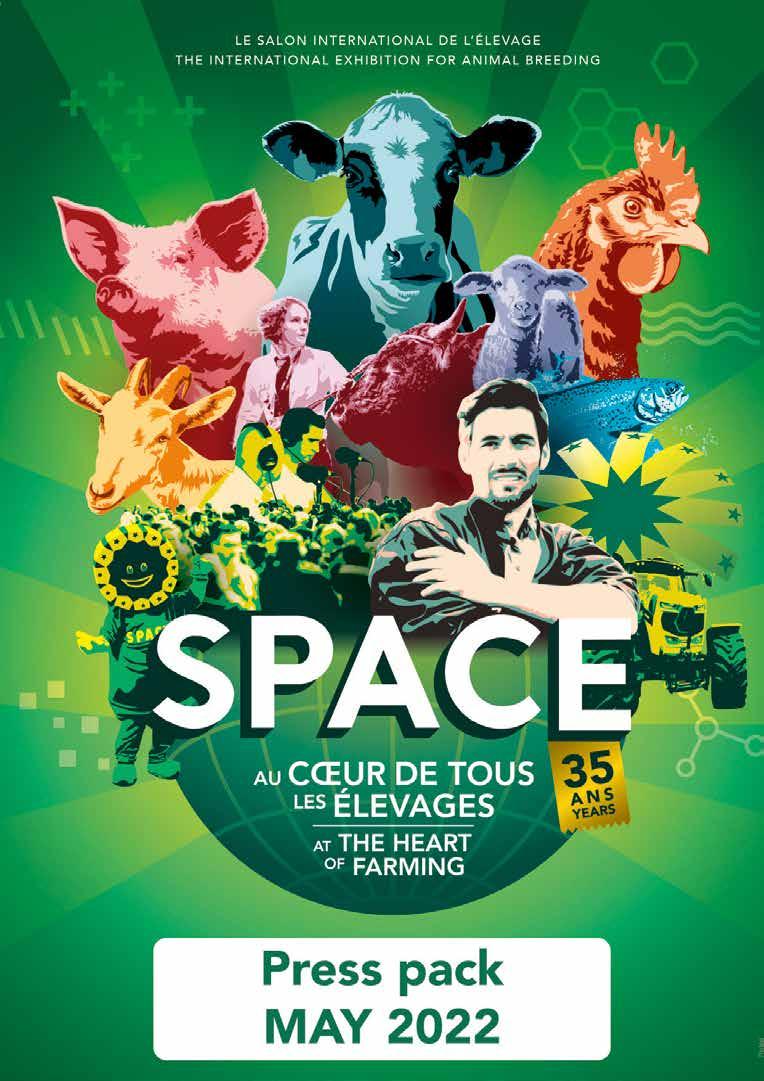
32 | - International Petfood
and feed sovereignty. Indeed, the pandemic crisis followed by the war in Ukraine have shown how dependent the French agriculture has become on imports (feed, energy, etc).
The French minister added that the war in Ukraine is “showing us how food can be weaponised” and therefore, how important it is to keep and improve our sovereignty.
“Even if animal farming must evolve and improve regarding climate issues, there is no future for agriculture without animals. It is a part of our food sovereignty structuring our regions and countryside and a source of employment,” he adds.
Innov’Space Awards: 36 Starstruck companies
On the Tuesday evening, the exhibitor’s party took place where the Innov’Space Awards were given. 36 exhibitors out of the 103 initial applications examined had between one and three starts distributed by the jury. These new tools or services assist farmers to improve their working conditions and are a veritable showcase of innovation.
Indeed, one in four French visitors and four in ten international visitors head for the winners’ stand. The jury is made of 50 members from the Agricultural chambers, technical institutes, INRAE (Intitut National de Recherche pour l’Agriculture, l’Alimentation et l’Environnement - National Institute of Reasearch for Agriculture, Food and Environment), INPI (Institut National de la Propriété Intellectuel - National Institute for Industrial Property), ANSES (Agence Nationale de Sécurité Sanitaire de l’Alimentation - National Agency of Food Safety), GDS, veterinaries, farmers and specialised journalists.
This year was also the 25th anniversary of the award and for this occasion selected the 100 most impactful innovations.
During the show Exhibitors
Around 1200 exhibitors came to the SPACE to display their products and services in 10 different halls plus an outdoor space. 22 countries were represented including the United States, India, China, Singapore, Germany, the United Kingdom and Denmark. Every two years, feed equipment manufacturers are represented at the SPACE. Among them Bühler, Amandus Kahl, CPM Europe, Ferotec, Sabe, Morillon and La Meccanica. Feed producers and nutrition companies such as AB Vista, Adisseo, Evonik, Danisco, DSM, Nor-Feed, Mixscience, Phileo by Lesaffre, Foss, Cargill were also here like every year.
Conferences
Every day, around 30 conferences took place with wide topics from the climate change and how livestock farming is improving in order to face the current challenges to the impacts of the war in Ukraine for the French agriculture and supply of feed and energy. During a panel presentation, a representative from l’Institut de l’Élevage (Livestock Farming Institute) underlined “the importance of communicating and defending agriculture - and livestock farming - as it is necessary and beneficial for all people but also how innovative the sector has been in order to reduce impact on the environment.”
The speaker also mentions that the use of water and the polemics that raised in France during the warm and dry summer. Indeed, a lot of restrictions have taken place during the summer and, once again, the public pointed fingers at the agricultural sector and its use of water, adding that “water is necessary to live, and transforming water into feed and food is not a waste or wrong use of the water when compared to swimming pools.”
Indeed, France is the second country, after the United States, in number of private swimming pools. “With climate change and the increasing rareness of water, we need to have a proper discussion and national strategy on the use of water,” she adds.
Despite these big challenges that the french sector is facing, she concludes by saying that she is “optimistic for the future as France has unique resources in terms of lands, climate, soil and technology”.
General atmosphere/attendance
Over the three days of the show, SPACE gathered over 90,000 visitors (of whom 8400 came from 120 different countries) and close to 1200 exhibitors (of which 300 were international and 250 taking part in SPACE for the first time).


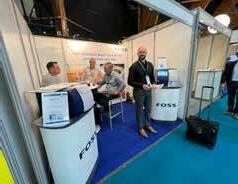
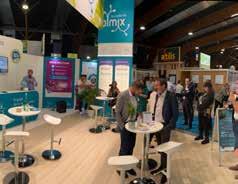

After the pandemic and two years during which travel by visitors from abroad was heavily restricted, those in attendance felt that the event recovered its full international dimension and glory.
Delegations from around the world came to meet exhibitors, visit farms and draw inspiration from their organisational models. Despite a difficult context both nationally and internationally, these three days have proved that with constructive dialogue and high attendance we can find solutions and have a positive outcome.
Indeed, SPACE is an exceptional showcase for the industry, a modern, constantly evolving industry with bright future. The show was full of positive energy and optimism to inspire confidence in farmers’ determination to carry out their jobs and ensure food sovereignty.
The next edition will take from Tuesday 12 to Thursday 14 September 2023 at the same venue, the Rennes Exhibition Centre.
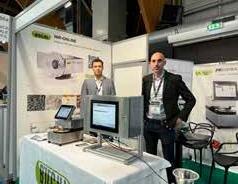
International Petfood - | 33
SuperZoo 2022
Comprehensive pet event scores a full house down in old ‘Sin City’

August 23-25, Las Vegas’s Mandalay Bay Convention Center was packed with pet industry professionals from around the world for SuperZoo, North America’s leading pet retail trade show.
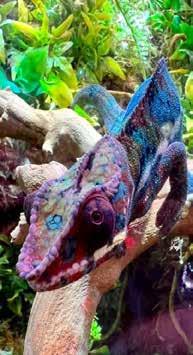

Produced by World Pet Association (WPA), SuperZoo 2022 welcomed more than 16,000 pet professionals, representing over 25 countries and all 50 states, to engage in new product introductions, expert-led education sessions and peer-to-peer networking events.
The energetic 331,500 square foot show floor featured more than 1000 exhibitors from every pet product category and 900+ products made their debut in SuperZoo’s sold-out New Product Showcase.
“As evidenced by this year’s attendance, SuperZoo continues to be the industry’s go-to trade show for the pet retail community – spanning one-door independent retailers to the biggest household names in retail,” says Vic Mason, president of WPA.
“SuperZoo 2022 attracted high-quality decision makers and delivered a show floor filled with emerging products and grooming trends, a highly popular and successful live animal area, an education program packed with thought leaders and rich content offerings, and a fun-filled atmosphere for pet professionals to connect and network with their community. We are counting down the days until we can do it again in 2023.”
About SuperZoo SuperZoo boasts the most buyer participation of any trade show for the pet retail industry in North America. SuperZoo provides pet retail and industry professionals with leading-edge education and access to the most comprehensive array of market-ready products for a hands-on experience for retailers to competitively differentiate themselves.
For the ninth consecutive year, SuperZoo has grown in exhibitor space and square footage and has been listed among Trade Show Executive’s “Gold 100” trade events since 2014. Produced by World Pet Association (WPA), the show attracts retailers, product suppliers and service providers at this must-attend annual event. For more information: www.superzoo.org
34 | - International Petfood
Buzzing from open to close
The 331,500 square foot SuperZoo show floor was buzzing from open to close, drawing nearly 10,000 of the most qualified pet industry retailers, buyers and decision- maker —including Target, Mud Bay, Chewy.com and more, as they scoped out the latest products, newest tech and emerging trends.
This year’s event featured more than 1000 exhibitors across the curated show floor areas Natural and Health, Specialty and Lifestyle, Farm and Feed, Aquatics, Reptiles and Small Animals, Groomers, Marketplace, Emerging Brands and the New Product Showcase, including an impressive 262 first-time exhibitors and 72 emerging brands.
Attendees and exhibitors alike expressed their overwhelming satisfaction at the display of innovation, buying opportunities and overall quality and diversity of exhibitors and retailers in attendance.
“As a company created born out of the pandemic, we didn’t know what to expect. We were blown away. The access to wholesalers, distributors and other brands to network with was incredible. SuperZoo was absolutely awesome,” says Peter Liu, co-founder of RIFRUF.”
SuperZoo is very professionally put together in a thoughtful way that enhanced the experience. In the ‘live animals’ area, people are able to come up to see the animals, hold the animals, and it allows us as exhibitors to be interactive with potential customers,” adds a Northwest Zoological Supply (live animals) employee.
SuperZoo’s international attendance was strong, representing 25 countries and over 13 percent of SuperZoo’s 2022 total attendance. Canada, the United Kingdom, Columbia and Brazil were highly represented and surpassed 2019 attendance figures, while Asian market attendance continues to increase steadily post-pandemic.
“We are attending SuperZoo from


Pakistan. As a new business, I did not know what to expect at our first tradeshow. Being selected as a winner in the New Product Showcase makes our brand an awardwinning product, which helps with brand recognition and our marketing efforts. Because of SuperZoo there have been so many new opportunities; I encourage all entrepreneurs in pet to come!” said Ayesha Chundrigar, Founder of TRIO Eco Friendly Pet Products, winner of the best accessory and gift category in the New Product Showcase. A record-breaking 900 debut products were on display at SuperZoo’s sold-out New Product Showcase.
“This was our first time at SuperZoo. It was great to be featured in the New Product Showcase, as it brought a lot of attention to our product and company. It boosted the number of buyers – both big and small – that we’ve been able to connect with, including those from Germany, Japan, The Netherlands, France and Korea,” says Simon Chun, co-founder of Jiby Dog Crew, runner-up for the best new dog product in the New Product Showcase. “We’re excited that people are excited about our product!”
Setting the industry standard
SuperZoo’s customisable education lineup delivered 70+ seminars and trainings—led by nearly 30 industry thought leaders—to help pet professionals refine their retail strategies, master the latest grooming techniques and stay ahead of animal wellness trends.
Following input from attendees, show organisers streamlined the 2022 education program, with sessions taking place Monday and Tuesday to allow for more time on the show floor to discover the newest pet products and innovations. This year’s education featured two specialty tracks—grooming and retail— and highly-attended 30-minute Free Show Floor Talks that covered consumer trends, technology, social media and influencer
marketing, sales tactics and more.
“We’ve always heard that SuperZoo was the industry standard, but it’s our first time. Education is really what brought us here. We learned some good information that was really helpful for our business,” says Mark Winner, owner of WagPride Pet Boutiques.
An expanded education partnership World Pet Association announced that they have expanded their education partnership with Fetchfind to include IndiePet Retailers and manufacturer product trainings and is also working on the development of a FREE industry-wide product database that is backed by WPA and powered by NextPAW to help foster the ease of product information sharing.
With more than US$35,000 in winnings at stake, SuperZoo’s grooming contests celebrated the creativity and talent of grooming professionals on the industry’s grandest stage.
WPA also recognised several pet retailers and industry leaders during the WPA Chairman’s Reception, which was held at the Skyfall Lounge in the Delano on Tuesday, August 23, 2022.
Pet professionals who are looking for additional ways to continue their SuperZoo experience can access WPA365 to discover a vibrant on-demand community, marketplace and learning centre by going to: https://mymag.info/e/1641

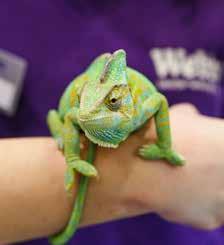
Exclusively for industry professionals, they’ll have the opportunity to find more products from top exhibitors, access exclusive education sessions and connect with passionate pros, reps, suppliers and other industry leaders.
SuperZoo 2023 will be shifting to new Wednesday through Friday dates, taking place August 16-18, 2023, with education August 15-16.
For more information, visit: https:// mymag.info/e/1642
International Petfood - | 35
PPMA TOTAL 2022
Successful industry show brings manufacturers, suppliers & customers together
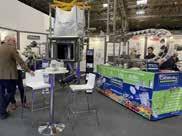

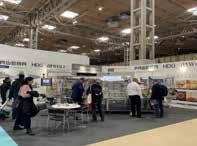

Since the completion of the show, which ran from 27-29 September at the National Exhibition Centre (NEC) in the British city of Birmingham, visitors and exhibitors have hailed the 2022 PPMA Total Show as a resounding success.
To date, the organisers have already received very positive feedback, with the processing and packaging industry calling the exhibition “a great networking event that has everything you need in the processing and packaging arena.”
A winning combination of expert exhibitors, representing the full production line, carried out live demonstrations of machines for high-calibre visitors. This created a fantastic atmosphere filled with invaluable opportunities, which Yamato’s National Sales Manager Paul Webster described as, “A onestop shop for our customers. Every solution in the world is here.”
This year’s show hosted over 350 stands representing 2,000 brands and featured a significant number of new product launches and ‘first showings’ of the latest technologies, automated solutions, robotics and vision systems.
“It was good to see what other technologies are out in the market and what opportunities
there are,” comments one visitor from Pepsi Co – Project Manager Nicole Carr.
Highly sought after Building and maintaining relationships with colleagues and suppliers continued in the evenings after the show, including at the PPMA Gala Dinner, which was highlighted by a performance from stand-up comedian Jason Manford in front of hundreds of exhibitors and VIPs.
The highly sought after PPMA Industry Awards were also handed out during the course of the exhibition to winners including Markem-Imaje, Fortress Technology, Pace Machine Handling, Crest Solutions, and Epson (UK).
The winners were praised by judges for their creativity, smart technologies and innovative solutions, focused on increasing productivity and efficiency, reducing costs as well as delivering excellence in customer service.
Show visitors were also rewarded with a three-day seminar programme of informative and educational presentations and opinionled industry insights. Centred around the theme ‘The Future Of…’ the seminars were compiled specifically to address the
many opportunities and challenges facing UK industry. Seminars also emphasised the efforts that are being made to make the manufacturing industry more sustainable and environmentally friendly as we work towards Net Zero.
An absolutely fantastic opportunity Summing up the benefits of this year’s show and events, Stuart Colton from Omron described it as, “An absolutely fantastic opportunity to engage with the most important market sector in the UK.”
Richard Little, PPMA Show Director said, “It is both overwhelming and gratifying to receive such positive and encouraging feedback from visitors and exhibitors alike, We are delighted that once again, in its 34th year, PPMA Total Show has delivered an event that reaches into the very heart of our industry, addressing the needs of our members as well as delivering on the aspirations and expectations of our visitors.”
The PPMA Show returns to the NEC in 2023 and will run from 26-28th September.
Potential exhibitors interested in booking a stand and would-be visitors can register their interest at https://mymag.info/e/1679
36 | - International Petfood
Industry Events
2023 May 1-3

Pet Fair South East Asia 2022 Bangkok, Thailand www.petfair-sea.com

US Private Label Trade Show Chicago, USA www.plmainternational.com
China International Pet Show (CIPS) Guangzhou, China www.en.cipscom.com

K-Pet Seoul, Soufh Korea www.bizkpet.co

Petfood Forum 2023 Kansas City, Missouri, USA www.petfoodforumevents.com
15-17
Zoomark International Bologna, Italy https://www.expobeds.com



2023 August
16-18
Pet South America 2023 Sao Paulo, Brazil www.petsa.com

2024 May 7-10

Interzoo 2024 Nuremberg, Germany www.interzoo.com
Georgia, USA www.ippexpo.org
Pets Forun Berlin, Germany www.globalpetindustry.com
Animal Health, Nutrition,



Technology
Europe


London, UK www.kisacoresearch.com/events/animal-health-europe-2023
Pet Expo 2023
Florida, USA www.globalpetexpo.org/2023M
2022 October 26-28
2022 November 13-15
17-20
18-20
2023 January 24-26 IPPE Atlanta,
25-27 Global
s 2023 March 6-8
and
Innovation
2023
22-23 Global
Orlando,
International Petfood - | 37
The China International Pet Show
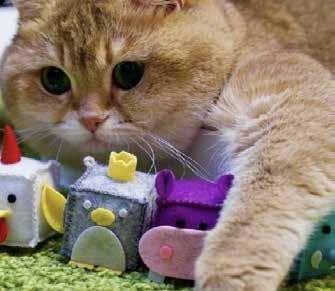
With 25 years of history, the China International Pet Show (CIPS) is the number one B2B international pet industry trade show in Asia.
Taking place at the China Import and Export Complex, Guangzhou, China, CIPS is widely regarded as the yearly global gathering for pet professionals and labelled as the most important sourcing platform in the world pet industry and the only B2B show to enter into the Chinese and Asian markets.
With intense programs and different themed conferences, CIPS is expected to be a marvellous opportunity for all professionals in the world to trade, connect, network, and build brands.
“CIPS is the best show we have been to for many years. We are surprised at how big and how fast China pet market is growing, especially with premium products and modern products. We are very happy to be here and will come back next year,” comments John Walgate, Managing Director of Vitalin, UK.
“In 1997, we participated at the first edition of CIPS as Tetra’s representative in China and started this 24-year cooperation with CIPS. CIPS is the frontier, or the eyes, of China pet industry.
“We have confidence that CIPS will continue leading more Chinese brands to open the global markets and assisting more overseas brands to expand their Asian business,” adds Ziqian Liu, General Manager of Spectrum Brands, China.
Gateway to the Asian market
CIPS is the gateway for brands to enter the Asian market, as the sole b2b platform in Asia it is the ideal place for developing Asian markets. CIPS is the largest sourcing platform in Asia for the global pet industry, where you can gain in-depth understanding of the market, seizing the latest industry trends for innovations.
The China International Pet Show will be a great place where companies dealing in different products like food, pet chews, dog-training articles, dog houses, cat houses, pet clothes, collars, pet toys, health-care products, grooming products, apparel, saddles/ saddle pads, bridle work, horse treats, stable equipment, grooming products, ornaments, healthcare products will send their representatives to the visitors to show the features of their products.
Your industry training platform


The Online Milling School provides a comprehensive 12-week remote learning experience covering all aspects of feed milling, from raw material handling through to final packaging and dispatch. www.onlinemillingschool.com


FISH FARMING TECHNOLOGY 38 | - International Petfood
Extruders








Dosing





Elevator buckets

Elevator & conveyor components







Feed milling


Feed Mill Automation











Bagging systems Bühler AG +41 71 955 11 11 www.buhlergroup.com FAWEMA +49 2263 716-0 www.fawema.com Statec Binder +43 3112 38 5800 www.statec-binder.com Bulk storage AGI www.aggrowth.com Behlen +1 402 564 3111 www.behlengrainsystems.com Behn + Bates +49 251 9796 252 www.behnbates.com Brock +1 866 658 4191 www.brockgrain.com Bühler AG +41 71 955 11 11 www.buhlergroup.com Silo Construction & Engineering +32 51723128 www.sce.be Symaga +34 926640475 www.symaga.com TSC Silos +31 543 473979 www.tsc-silos.com Van Aarsen International +31 475 579 444 www.aarsen.com Computer software Inteqnion +31 543 49 44 66 www.inteqnion.com Van Aarsen International +31 475 579 444 www.aarsen.com Coolers & driers Bühler AG +41 71 955 11 11 www.buhlergroup.com Consergra s.l +34 938 772207 www.consergra.com Extru-Tech +785 284 2153 www.extru-techinc.com FrigorTec GmbH +49 7520 91482-0 www.frigortec.com FAMSUN +86 85828888 www.famsungroup.com Van Aarsen International +31 475 579 444 www.aarsen.com Yemmak +90 266 7338363 www.yemmak.com Yemtar Feed Mill Machines +90 266 733 8550 www.yemtar.com
Bühler AG +41 71 955 11 11 www.buhlergroup.com Van Aarsen International +31 475 579 444 www.aarsen.com
4B Braime +44 113 246 1800 www.go4b.com Tapco Inc +1 314 739 9191 www.tapcoinc.com Yemtar Feed Mill Machines +90 266 733 8550 www.yemtar.com
4B Braime +44 113 246 1800 www.go4b.com Bühler AG +41 71 955 11 11 www.buhlergroup.com Henry Simon +44 0161 804 2800 www.henrysimonmilling.com Tapco Inc +1 314 739 9191 www.tapcoinc.com Yemtar Feed Mill Machines +90 266 733 8550 www.yemtar.com Van Aarsen International +31 475 579 444 www.aarsen.com
Almex +31 575 572666 www.almex.nl Andritz +45 72 160300 www.andritz.com Bühler AG +41 71 955 11 11 www.buhlergroup.com IDAH +866 39 902701 www.idah.com Wenger Manufacturing +1 785-284-2133 www.wenger.com Yemmak +90 266 7338363 www.yemmak.com Yemtar Feed Mill Machines +90 266 733 8550 www.yemtar.com
PLP +39 05 23 89 16 29 www.plp-systems.com vibronet-Gräf GmbH & Co.KG +49 6441 62031 www.vibronet.com Yemmak +90 266 7338363 www.yemmak.com Zheng Chang +86 2164184200 www.zhengchang.com
Bühler AG +41 71 955 11 11 www.buhlergroup.com Van Aarsen International +31 475 579 444 www.aarsen.com Laboratory equipment Tekpro +44 1692 403403 www.tekpro.com The Market Place lists leading manufacturers of equipment used for the production of petfood. To be included in the Market Place please contact Tuti Tan at tutit@perendale.co.uk. International Petfood - | 39
the interview
Gunnar Hallmann, Industry Director, Aqua & Pet, Andritz Feed & Biofuel, Denmark
With over 20 years’ experience in the pet food sector, Gunnar Hallmann started his career at Arovit (now C&D Foods) as a Project Manager in 1999. During that time, Mr Hallmann held a number of high-level positions in project, factory and product management, before progressing into more strategic operational roles.
Born and educated in Denmark, he holds degrees in production technology and business administration, and a Master’s in packaging technology and general management.
In 2020 Gunnar Hallmann joined Andritz Feed & Biofuel, where his considerable expertise has been instrumental in driving the company’s aqua and pet food business forward.
You have a career that spans two decades in our industry, what initially led you to get into this field?
I think it was pure luck! At the time I was spending three hours per day commuting time to get to my job, and then a role became available at a wet petfood plant close to Esbjerg, where I was living at that point. I applied for the job and was appointed and ended up staying for 22 years.
I was a local project manager and later factory manager for a dry petfood operation. Following that I became general operations manager at the original plant I had started at, before taking on a more strategic role in international sales. This progressed to international project management, where I developed installation projects across the various factories the company owned.
I joined Andritz Feed & Biofuel in October of 2020, where I now apply my experience as Industry Director for Aqua and Pet Food.
In recent years what are the most critical technological developments that you have witnessed in our sector? One of the key things to mention here is the change in mindset that has occurred - from a focus on capital expenditure to one of analysing total cost of ownership. Attractive initial investment costs have often led to far higher expenditure down the line – due to issues such as poor insulation or simply substandard engineering – and what we are seeing is more focus on the bigger picture and how automated plant solutions add significant value in this sector.
In the petfood business, the equipment has historically required highly skilled operators, but as the available skilled labour force has shrunk, we have been focusing on making our equipment as innovative and intuitive as possible. The more automated and intuitive the systems, the less the margin for human error becomes, and this move to automated solutions will increase as labour challenges persist.
With more automation, it is important to find a partner that can deliver complete plant solutions, as a partner with these capabilities can look at automation of the whole factorynot simply individual machines.
This is important, as individual machines may be excellent in their own right, but if not properly connected to the other equipment on the line then any gains can quickly be lost.
The war in Ukraine and sanctions on Russia will have an additional impact on petfood ingredient availability and cost. How can producers optimise resource use and reduce wastage during production processes in order to best protect their businesses from these threats?
One thing that we will see going forward is a change in consumer behaviour, as price challenges influence the decision-making process in terms of product selection.
For petfood, people have started to look more closely at the cost, where perhaps before they were more inclined to select premium products over more budget friendly alternatives.
Change is happening as a result, as the need to provide premium products at keener prices increases. To achieve this, the production process must be fully optimised through close collaboration with solutions providers, reducing wastage to a minimum. But the equation is broader than just the process itself. Manufacturers must also look closely at the raw material ingredients that feed into that process, their availability and their logistical footprint, as well as elements such as packaging materials – which I believe will increasingly shift to more basic, sustainable options in the near future.
In light of these rising ingredient costs, how can petfood producers lower the overall running costs of their processing plants?
Again, it comes down to the optimisation of your production process by getting in contact with your equipment supplier to ensure the current equipment is delivering against expectations. Energy efficiency is a key element here, and for petfood plants the largest consumer of energy is the drying process.
It may be that there are opportunities for energy reuse, which would contribute to the optimisation process, or it could be that replacing existing equipment with more efficient alternatives will deliver greater savings in terms of total cost of ownership. If we look at those that are planning new plants, selecting a single plant solutions supplier is highly recommended.
Through having one supplier that has total responsibility for the plant solution, you can ensure that they look at optimizing the equipment and, importantly, the cooperation between the individual process steps. They will take ownership of the controls, the setup and the ongoing effectiveness of the solution, helping you to achieve the lowest total cost of ownership possible.
40 | - International Petfood
Are there any emerging opportunities for the introduction of innovative solutions that can support industry operatives in achieving the current petfood industry sustainability standards?
The current situation in the region has shown how vulnerable people in Europe are regarding gas consumption. In petfood plants, the dryers are often powered by natural gas, and with the dryer using up to 70 percent of the energy consumption in the plant there is an opportunity to look at alternative energy sources and also at how a certain proportion of the energy used can be reused.
Heat exchangers, for example, can help with this process by capturing rising heat, but this must be carefully managed so as not to pollute the process and cause hygiene and food safety issues.
Often, adjusting the dryer itself can deliver huge efficiency savings. For example, we recently carried out an optimisation assessment at a customer plant and found that with some adjustments and slight modifications we could help them to achieve a massive 37 percent saving in energy consumption of their dryer.
Going forward, what aspects of petfood nutrition and production would you like to see addressed and why?

I think there should, and will be, a focus on natural ingredients and alternative protein sources going forward, coupled with local sourcing in order to reduce the associated transport logistics. Insects have been approved for use in Europe for some years now, but we have only just recently been given the go-ahead in the US.
This means we must also keep a close eye on the surrounding legislative elements globally in order to ensure total compliance – particularly in the petfood sector, which, as you know, is heavily regulated.
This is important, as an innovative new protein source will be rendered useless without regulatory approval. On the production side of things, energy consumption will continue to be a core point of focus, and here I would encourage manufacturers to work with a plant solutions provider that can help to identify where savings can be made through advanced technologies and improved efficiency.
INDUSTRY FACES
Kemin Nutrisurance names new President

Kemin Industries has named Kimberly Nelson, a third-generation member of Kemin’s founding family, as president of Kemin Nutrisurance, the company’s pet food and rendering technologies business unit.
Kemin, a family-owned-and-operated company, was founded by Ms Nelson’s grandparents, RW and Mary Nelson, 61 years ago. Ms Nelson has been with Kemin for seven years, most recently serving as General Manager – North America

During her tenure, the global business unit saw double-digit sales growth despite the challenges of the Covid-19 pandemic and its stress on the supply chain.


“I’m thrilled to lead Kemin Nutrisurance and immensely proud to continue the important work my family has built over the last six decades,” says Ms Nelson.
“As a pet owner myself, I’m especially excited to be part of this business unit, and I am eager to continue our success and expand upon it to further cement our position as an industry leader.”
AAFCO announces new Executive Director
The Association of American Feed Control Officials (AAFCO) is pleased to introduce its new executive director Austin Therrell, who brings a mix of leadership, innovation and deep experience in animal-feed and state regulation to the organisation during an exciting and progressive time for the industry.

With a growing focus on animal-feed regulation in the US and around the world, Mr Therrell’s new position is well-timed to guide and support AAFCO’s vision, mission, strategic objectives and initiatives for promoting a safe feed supply.
As a member and leader within AAFCO, Mr Therrell has already been active in the organisation’s initiatives and achievements. In addition to serving on AAFCO’s board of directors, he has cochaired the Feed and Feed Ingredient Manufacturing Committee, been a member of the Pet Food Committee, and led many workgroups drafting and revising guidelines.
Pet Honesty appoints new CFO

A trusted leader in premium pet health products and a portfolio company of Vestar Capital Partners, Pet Honesty announces the appointment of Steve Chopp, an industry operator with around two decades of experience in the industry, as its new Chief Financial Officer.
Founded in 2018 and headquartered in Austin, TX, the company provides a natural and noticeable boost to pet health through natural, science-backed products that demonstrate effectiveness pet parents can truly see.
“Steve is an accomplished leader with broad experience developing and executing high-impact strategies. He will be an invaluable asset as we continue our mission to elevate pet vitality to deliver more joyful moments for pet parents,” comments Richard Greenberg, CEO of Pet Honesty following Mr Chopp’s recent appointment.
Bühler unanimously elects accomplished executive to its Board of Directors
Swiss milling technology manufacturers Bühler are pleased to announce that Dr Zeno Staub has been unanimously elected to the company’s Board of Directors. With his appointment, the Board of Directors is gaining an accomplished executive with nearly three decades of investment experience.

In a career spanning multiple decades, the Swiss national started his career as a founding shareholder and managing partner at Almafin AG, St Gallen, Switzerland, where he was active from 1994 to 2000 in consulting and software development specialising in risk management, asset and liability management, and legal reporting.
He has also sat on the Executive Board of Zurich-based BZ Informatik AG (now Avaloq), and in 2008, he strategically reoriented Vontobel’s Asset Management business area, successfully positioning it in the market. Dr Zeno Staub has been Chief Executive Officer of Vontobel Holding AG and Bank Vontobel AG since 2011.
THE
42 | - International Petfood
SHIPLOADER SPECIALIST






















NEUERO produces the most reliable and high-quality bulk ship loaders worldwide | neuero.de/en
Twin-Screw Extruder SPHS Series




Official Website Facebook ZhengChang Group : No.28 Zhengchang Road, Kunlun Development Zone, Liyang, Jiangsu, China : +86 21-6418 4200 Fax : +86 21-6416 3299 : International@zhengchang.com : www.zhengchang.com/eng Address Telephone E-mail Website Fomula management, one-key startup, load control, precise addition of water vapor, production information recording.


























































 NZ petfood company is first of its kind to receive B Corp certification
NZ petfood company is first of its kind to receive B Corp certification





































 by Jyothsna Nelloolichalil, Managing Editor, International Petfood magazine
by Jyothsna Nelloolichalil, Managing Editor, International Petfood magazine























































































